Island Hopping in Iran: Qeshm and Hormuz (39)
Your usual Iran trip starts at Tehran airport or for overland travelers in the north of the country with the city of Tabriz. However, since we arrived in Iran in the middle of February, it was clear to us that we would like to travel the country from south to north and visit the islands in the Persian Gulf as our first destination. This was a logical continuation of our trip through Oman before, as we could find many similarities. The south of Iran in the Hormozgan province is strongly influenced by Arabic culture, which can be seen in the language, the cuisine and the local dresses. The Bandaris, the inhabitants of the region, were able to preserve their original culture in Iran. Some of the men wear white djellabas and the women long flowered dresses, bizarre face masks and beautiful henna tattoos on their hands. The rhythmic dances are accompanied by fast drum beats to which the men let their shoulders circle. They eat thin flat bread and drink sweet milk tea, which is called Karak Tea, just as in Oman. Beautiful wall paintings on the islands depict this culture. Although we crossed the Persian Gulf by ferry, so many things reminded us of the "other" side, Musandam in Oman. That’s one of the great things about traveling overland, it allows you to notice similarities and subtle differences between regions.
The two islands Qeshm and Hormuz offer us right at the beginning of the Iran trip a scenic highlight which is probably unparalleled worldwide. Qeshm is known for its canyons, the world's longest salt cave and mangrove forests and Hormuz is a geological wonder and probably the Iranian answer to Goa, not quite to the delight of all locals. But let's take it one step at a time. We start our trip on the island of Qeshm, where we spend 10 days and cycle around almost the whole island. Of course, this could have been done in just four days, but we had to get used to Iran first, so we only did short daily stages and took a lot of time to explore everything and even doing that we missed Hengam Island, which would have been a highlight. Oops. Well, next time then.
Qeshm Island: Dromedaries, Canyons and Stars Valley
With a length of 136 km, Qeshm is the largest island in the Persian Gulf and is known for its rock formations sculpted by wind and rain, and numerous canyons invite exploration. We arrive in the evening in Laft, a former fishing village with wonderfully photogenic roofscape of wind towers (badgirs) and minarets. Time seems to stand still and we’re observed curiously.
Shortly behind the village begins a lunar landscape with bizarre rock formations. We don’t know where to stay tonight, when we suddenly receive a response to our booking request from a popular homestay in Coludang. Usually people book this place months in advance as we’ll soon learn. The price for a small room with mattresses on the floor is a steep EUR 40.-. If the prices continue like that in Iran, we’ll have to spend much more time in our tent. On the other hand, we think it’s great that you can stay overnight in those community-run homestay in the villages instead of big hotel chains.
Until we arrived on Qeshm, we weren’t aware that we're traveling in the absolute peak season on the Persian Gulf and that this is the most popular region for Iranian tourists in winter. Due to the pandemic, many locals haven’t traveled for two years and everything is now even more crowded than before. We are honestly a bit overwhelmed with the crowds everywhere, but we’ll probably have to get used to it. Iran will be the first country where we are unexpectedly confronted with mass tourism again. Many young Iranians from the cities visit the Persian Gulf and especially Hormuz Island, where they enjoy a little more freedom than usual. We see men in shorts and women in T-Shirts and without headscarves. Unfortunately, what seems natural to us, is only possible in a few places in Iran and behind closed walls.
We make another trip to the Hara Mangrove Forest, which we already visited by speedboat from Bandar Khamir. But this time we make it in a more sustainable and suitable way, as we book a SUP trip and spend the whole day navigating our boards through the channels of the mangrove forest while trying not to fall into the water. Of course, fully clothed and not in swimwear, as one would wish at over 30° degrees. We enjoy a late lunch on a boat and then watch the sunset from our boards. It doesn't get much romantic than this and our Iran trip starts to feel like a holiday for a moment.
We continue cycling to the west of the Island, from one scenic highlight to the next. We have the Valley of the Statues almost to ourselves and feel transported to a white version of the famous Monument Valley in the US. We cycle along dromedaries and many Iranians stop and want to know more about our journey. Sometimes the small talk can get quite exhausting when you’re completely sweaty from cycling and just want to be for yourself. But we’ll get used to this as well.
It gets really crowded at Chahkooh Canyon, a popular destination. You can climb up to the intersection of two narrow vertical canyons. On small paths we wander through the impressive canyon and try to escape the masses and we’re not the only ones with that idea. In a cave we meet some young Iranians smoking pot. The few people passing this corner of the canyon don’t seem to mind.
After visiting the canyon, we soon leave the main road and cycle to the south of the island. Soon the asphalt road gives way to a gravel road and a fierce headwind prevents us from moving forward. The traffic decreases and suddenly we’re alone on the road for hours. We pitch our tent by the sea and can finally enjoy some solitude.
Scenically it remains spectacular and along our way lies the longest salt cave in the world, the Namakdan Salt Cave. Full of awe we enter this natural wonder and marvel at the many salt formations and the white walls which remind us of snow. We taste a little bit and indeed, everything here is salt. The locals take advantage of this and fill big bags of salt. Nobody stops them. Although the island of Qeshm has been designated as a UNESCO Geo Park site, no consideration is given to the environment and twice UNESCO has threatened to withdraw the status from the island.
Stars Valley is the last geological attraction we visit on Qeshm Island. For centuries, wind and water formed majestic gorges and canyons here. However, legend has it, that this valley was created by a shooting star. The locals believe that the valley is haunted by ghosts and djinns and advise against coming here at night, otherwise you would never return. The wind that blows through the valley makes eerie sounds, probably the source of these legends. It must be great to come here for sunset, but we have a ferry to catch.
After 10 days on Qeshm Island we say goodbye to this unique Island, which is an absolute dream for cyclists and definitely worth a visit. Where else can you find dolphins, dromedaries, salt domes, mangrove forests, lunar landscapes, lonely beaches and numerous geological wonders in just one single spot?
The Rainbow Island Hormuz: An Iranian Hippie Paradise
You probably know this yourself. You travel to a special place, feeling like an adventurer, and then you meet that one person that tells you: «It's not the same anymore. You should have come here XY years ago.» We’ve heard it multiple times, whether in Cambodia, Mexico, or anywhere else. There’s always that feeling of arriving too late or being born too late for the real discoveries. But in Hormuz, tourism only started to arrive 4-5 years ago on this small island, that measures 42 km². And even if the island is still advertised in travel books as an insider tip, it’s been known to Iranians for a while. Artists and hippies were attracted by the unique nature and the open-minded atmosphere and they started moving to the island, finding work as musicians and painters or they decided to open a guesthouse or café. The tourists followed, attracted by the freedom that the island offers. Nowadays, Hormuz can get quite crowded during the winter months.
As soon as we get off the ferry, we realize that the atmosphere here is completely different from that on Qeshm Island, a real relaxed island life, and we suddenly feel far away from Iran.
Only about 6’000 people live in Hormuz village in the north of the circular island. The rest of the island is considered uninhabitable as it consists largely of salt, which makes the soil infertile. In winter, temperatures are pleasantly warm at around 25° C, but in summer it’s said that the heat is unbearable. The town Hormuz itself is deeply relaxed. There are almost no cars on the island and one moves around only by foot, by Tuk-Tuk or in our case by bicycle. Accommodation is in simple homestays and not in big hotels, because there is no room for them. Some creative cafes have opened and offer lemonades and milkshakes with a view and in the evening the boardwalk is filled with locals and tourists eating cheap samosas and falafel sandwiches on plastic chairs.
There seem to be three different worlds that coexist on Hormuz. The locals with colorful traditional dresses come to the promenade in the evening, sizzle fish, prepare flatbread and drink tea with the whole family on large mats. In between, Iranian backpackers with dreadlocks and colorful Aladdin pants stroll around in a sense of freedom, and wealthy fashion-conscious city dwellers take a short vacation on the island and snap everything for Instagram. The whole country, by the way, seems to be caught up in the Insta-hype. No wonder, since social media is one of the few open windows to the rest of the world.
Until a few years ago, the locals lived from fishing, but today income from tourism plays an increasingly important role. However, not all villagers are happy about the freedom-seeking youths the island attracts and guesthouses owners are sometimes threatened if their guests go out on the street without obeying the Islamic dress-code. It’s no surprise, then, that many accommodations are not even posted from the outside in order to avoid regular police controls.
Two cultures seem to clash here and it reminds me a lot of Goa. But not only that, as soon as we arrive we pass a store that bears the name Arambol. Just like that hippie place in Goa, where I was once for a longer time. And so, it’s not surprising when we meet Iranians who have also been to Arambol and who talk about Indian spirituality while preparing a smoke. For a short time, we forget where we are. The call of the muezzins brings us back to reality.
Like stepping into a Dali painting
What all visitors and residents on Hormuz have in common is the fascination for the unique nature on the circular island, because no matter where you look, you’ll see this pinkish red color. But if you look closer, you can see the entire color palette from white to dark red, and at the end of the rainbow is a white salt mountain or a valley with a saffron-colored river. The island adopted the name Rainbow Island for the unusual colors of its sands and rock formations that are the product of high percentages of mineral concentrations and layers of volcanic material on the surface. Extravagant shapes and colors created by earth movements and erosion processes that have created a geological wonder. Hormuz is even called the only edible island in the world, as a mountain so rich in red oxide that it is used as a spice in cooking or to make local bread.
Every part of the island is different: deep red is the sand on the coast, then you come across white and yellow rocks and bizarre formations. Behind rocky gorges the terrain drops abruptly in steep cliffs to the water and around the corner you can find a wide sandy beach where you can camp and swim. Have we arrived on another planet? It feels completely surreal, like we stepped into a Dali painting.
We explore the island twice by bike and can’t believe our eyes. We make numerous stops, explore the rarely visited Safran Valley, let glittering silver sand glide through our fingers and discover the Rainbow Cave, which glows in different colorful layers and looks like something straight out from an Acid trip. This island is truly unique and no surprise, is it such an inspiration for artists. In the evening the beaches fill up with people camping and enjoying themselves by dancing or swimming, even the women, when feeling unobserved. A little piece of freedom, also for us.
It’s unfortunately not as idyllic as it may sound. Mass tourism has definitely arrived on Hormuz and as we explore the island by bike on the weekend we’re constantly overtaken by Tuk-Tuks that play loud music and transport hooting Iranian tourists. Unfortunately, the large amount of visitors leads to a lot of waste and people are taking away sand or rocks from the island in big bags without anyone preventing them. There are so many people that it’s sometimes not possible to really feel the magic of this island.
In conversations with the locals, it’s clear that they reject this new tourism and would like to see it regulated, but how could that look like? How can the local population equally participate and profit from tourism, while protecting the nature and still make the island accessible to everyone, regardless of their budget? This is a question I often ask myself, having worked in tourism for many years. The advantage of an island is that you have the possibility to work towards responsible and community-based tourism with certain regulations. But is there a willingness to do this or does it rather move in a different direction, with more buildings since visitors do provide important revenue? One step in the right direction is this particular resort for environmentally conscious travelers: Earth domes. An Iranian architecture firm worked with locals to build colorful domed houses out of sandbags and by using natural materials that are abundant on the island.
We will certainly follow the development of Hormuz and hope very much that a solution can be found for sustainable tourism on this unique island. After four days in the hippie enclave, it's back to the mainland for us and back to Iranian reality. In the next blog we will take you to fascinating adobe cities and to one of the hottest places on earth.


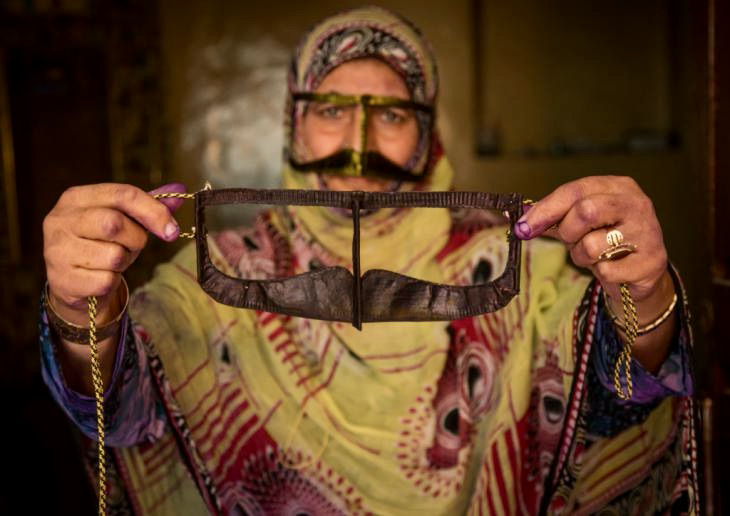
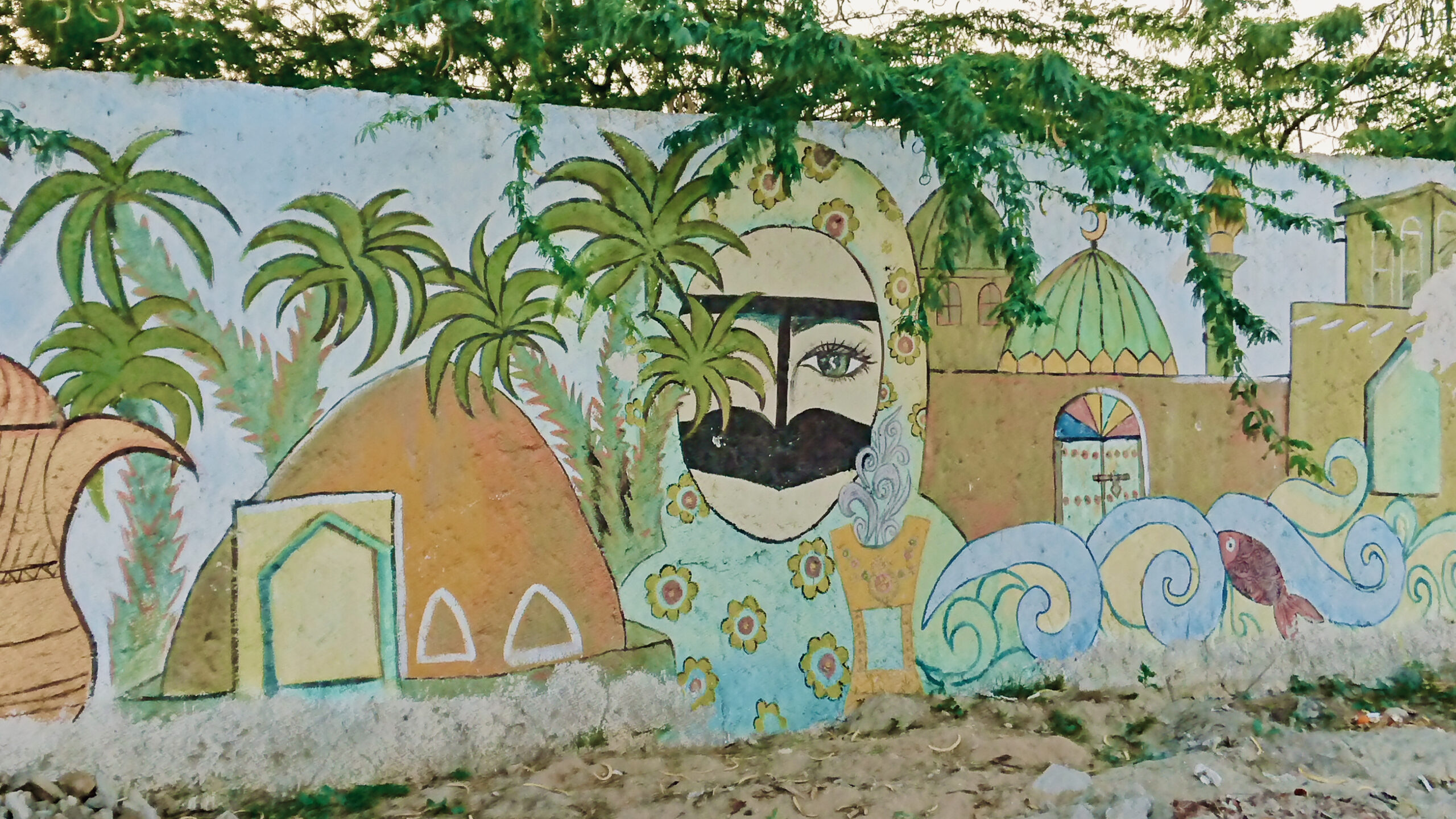

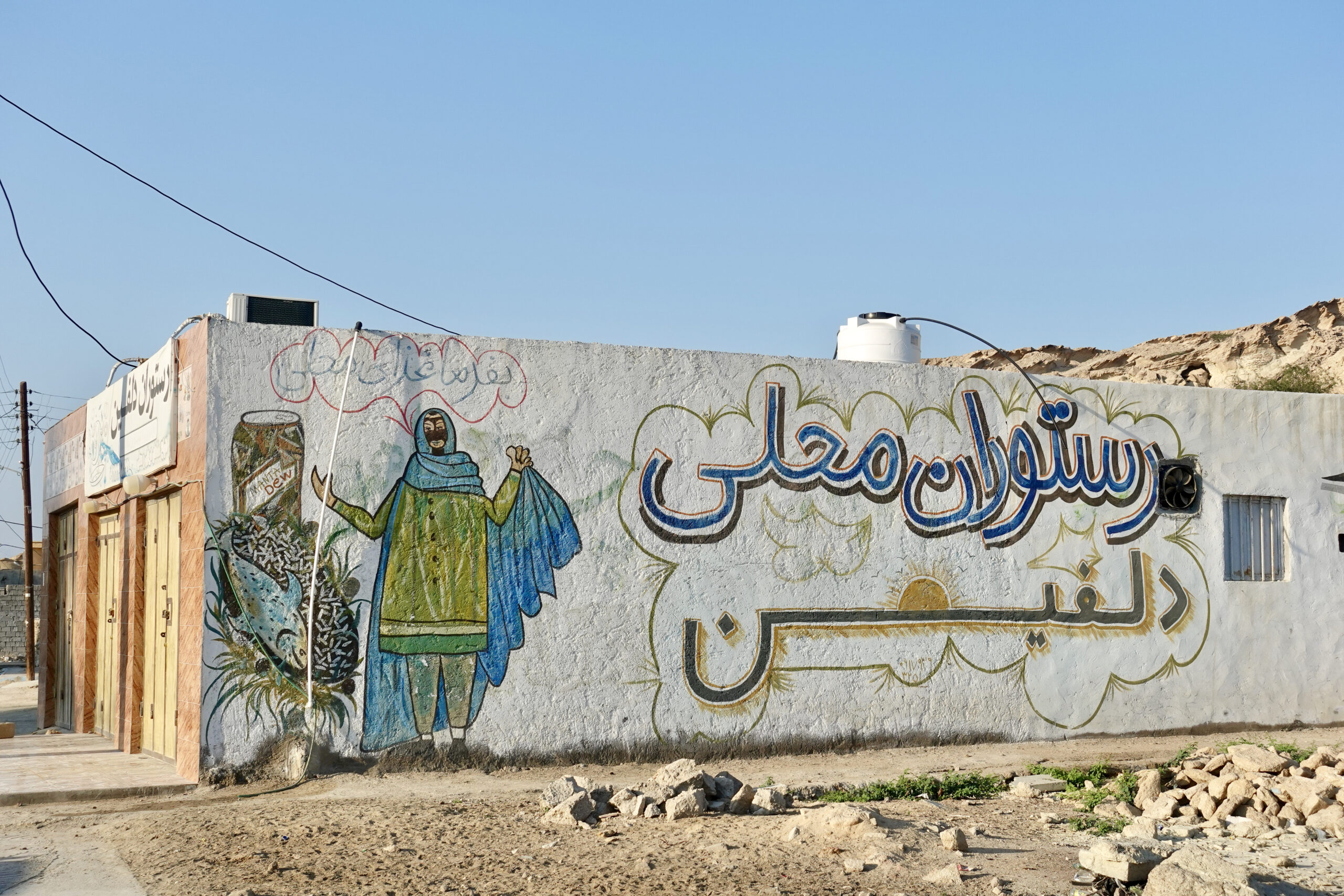

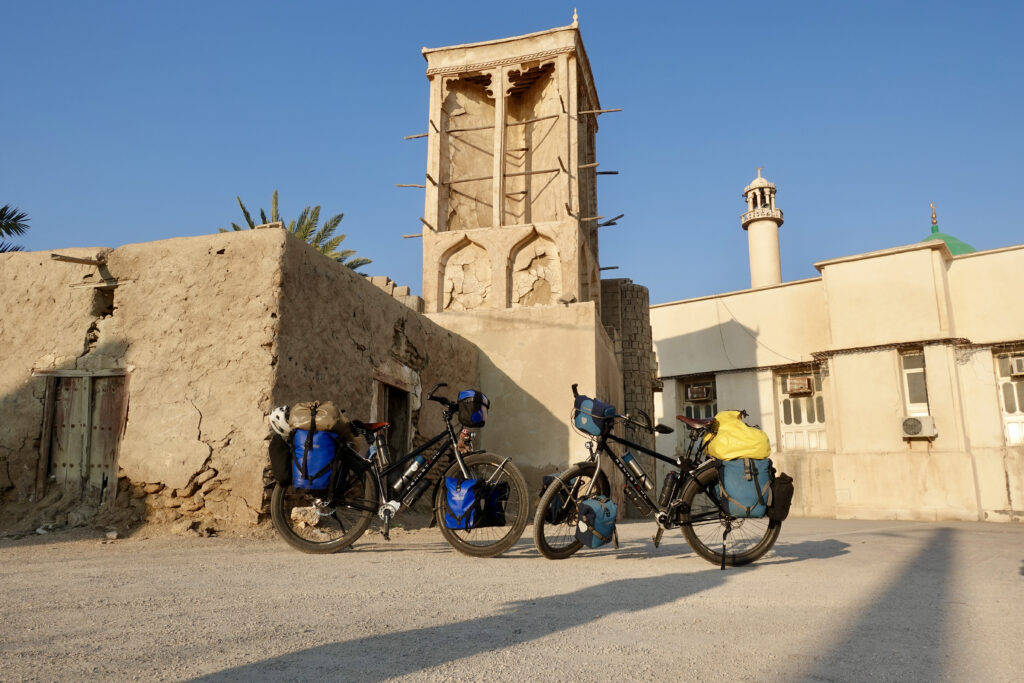
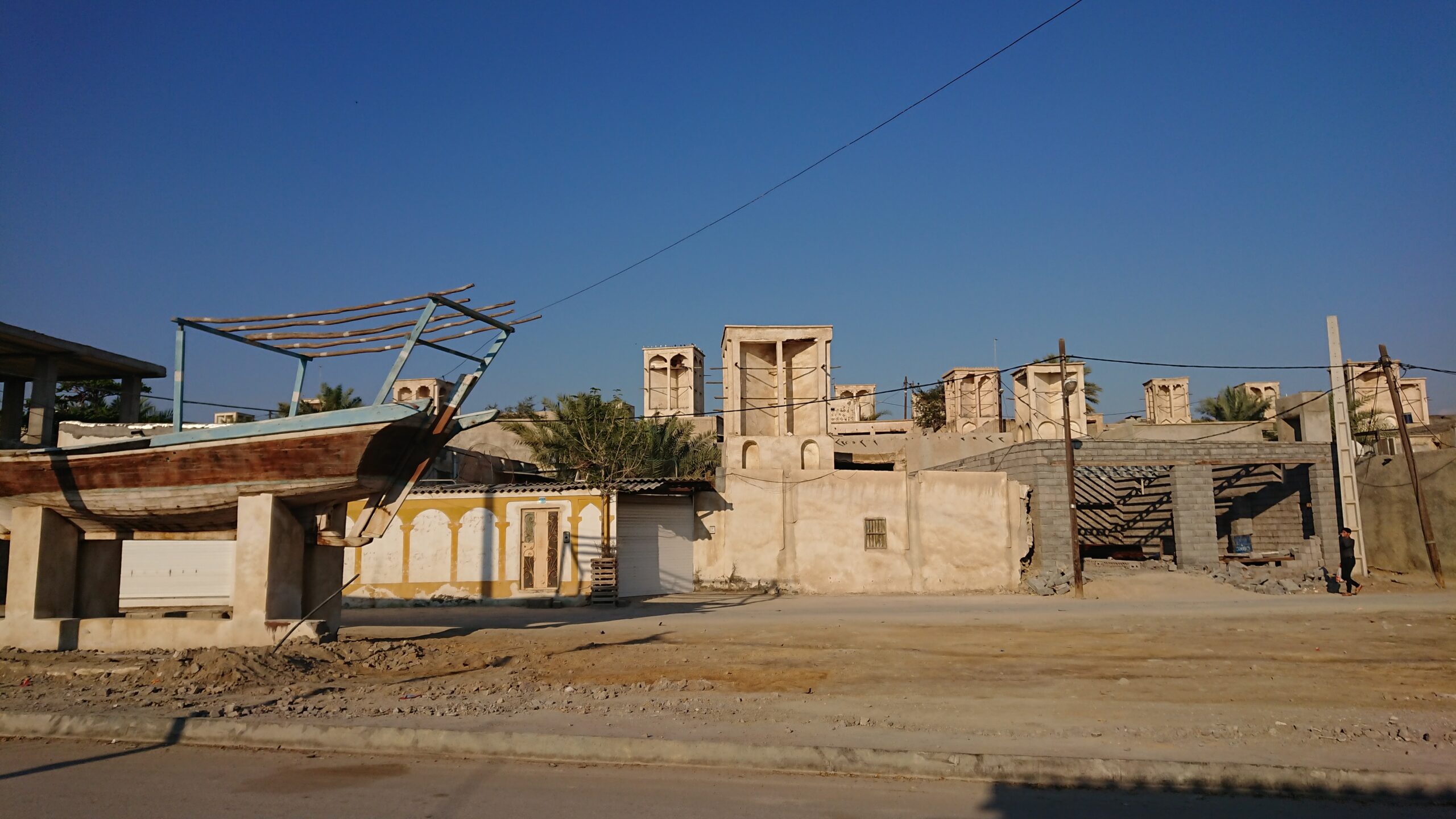
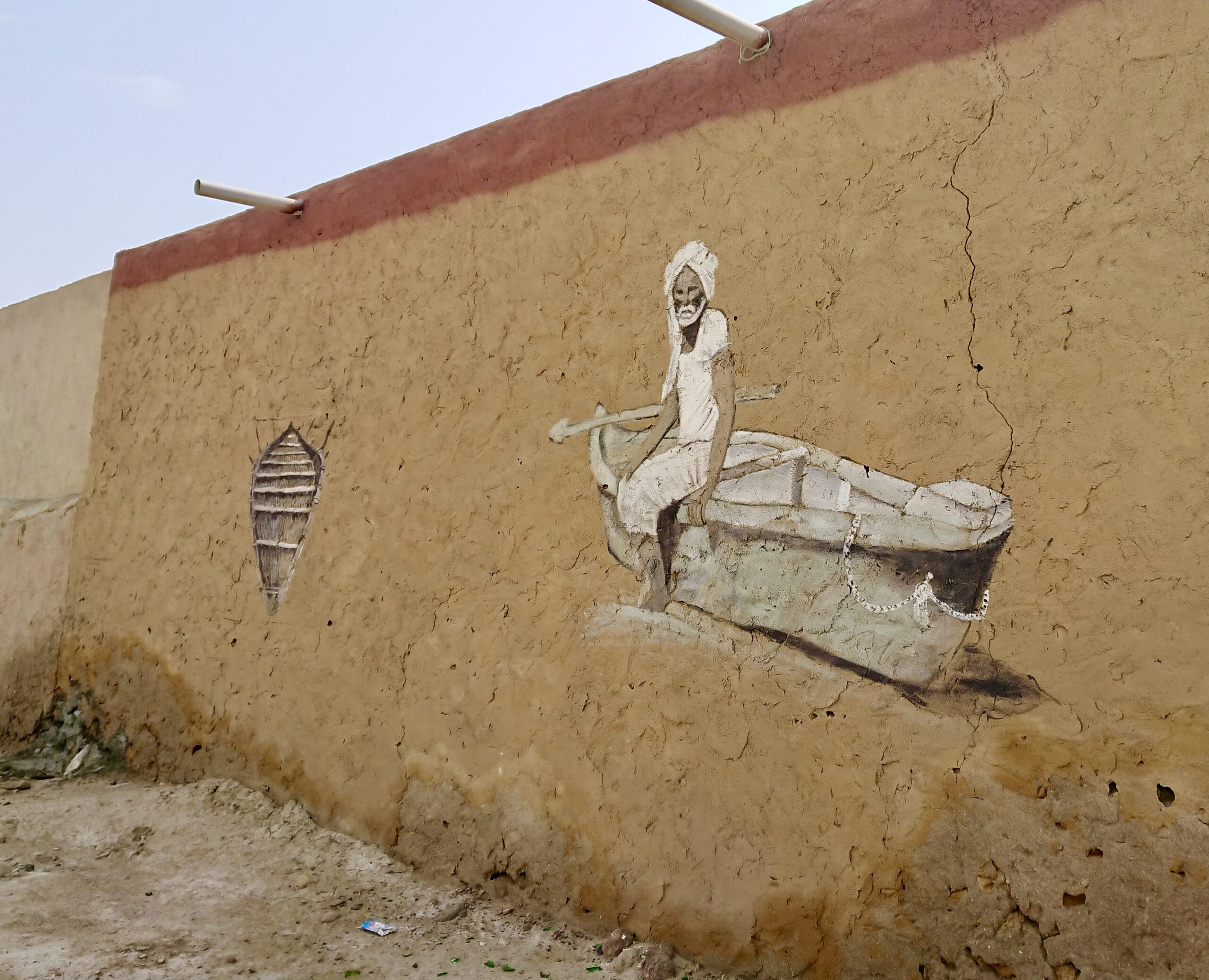
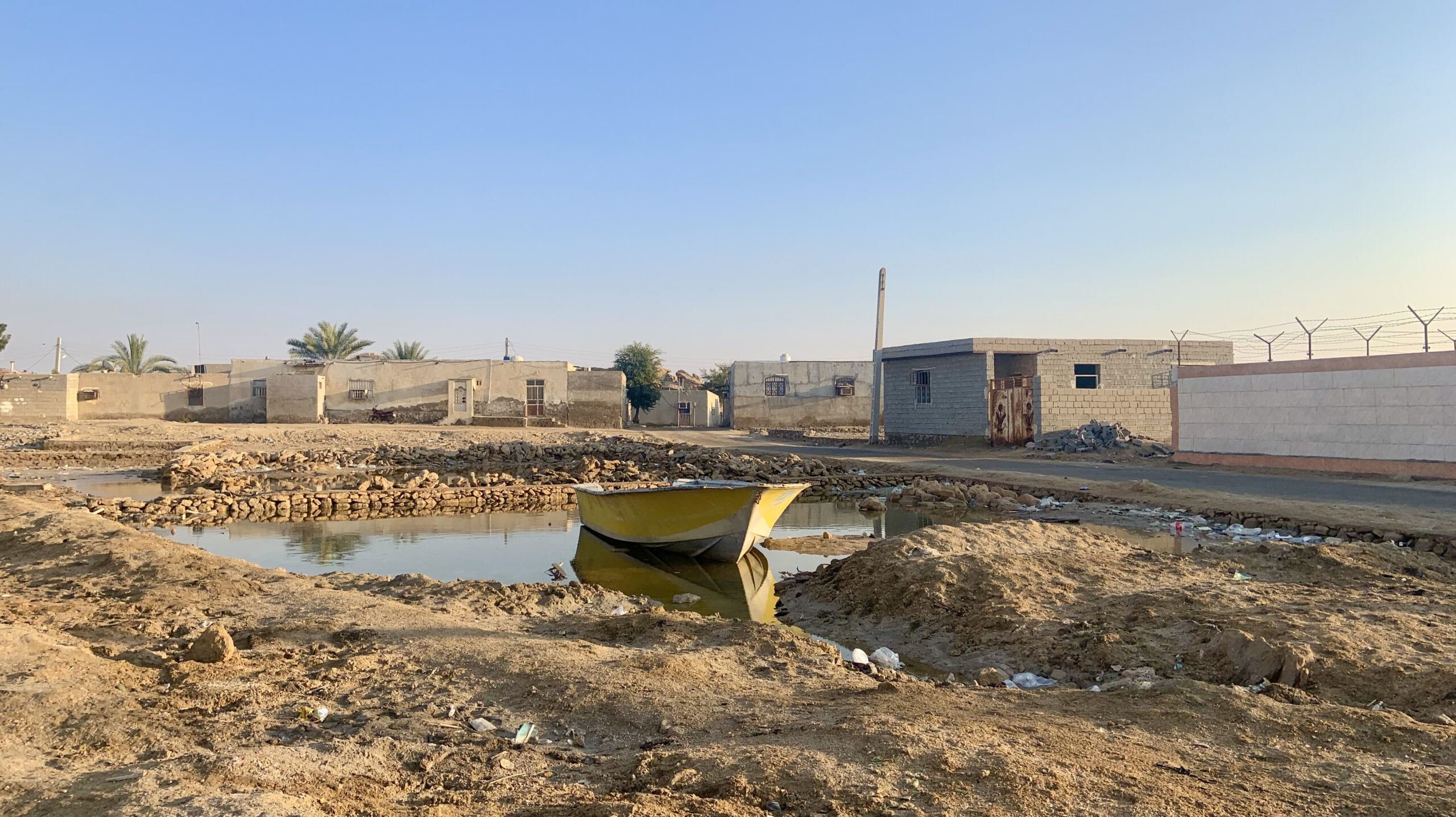

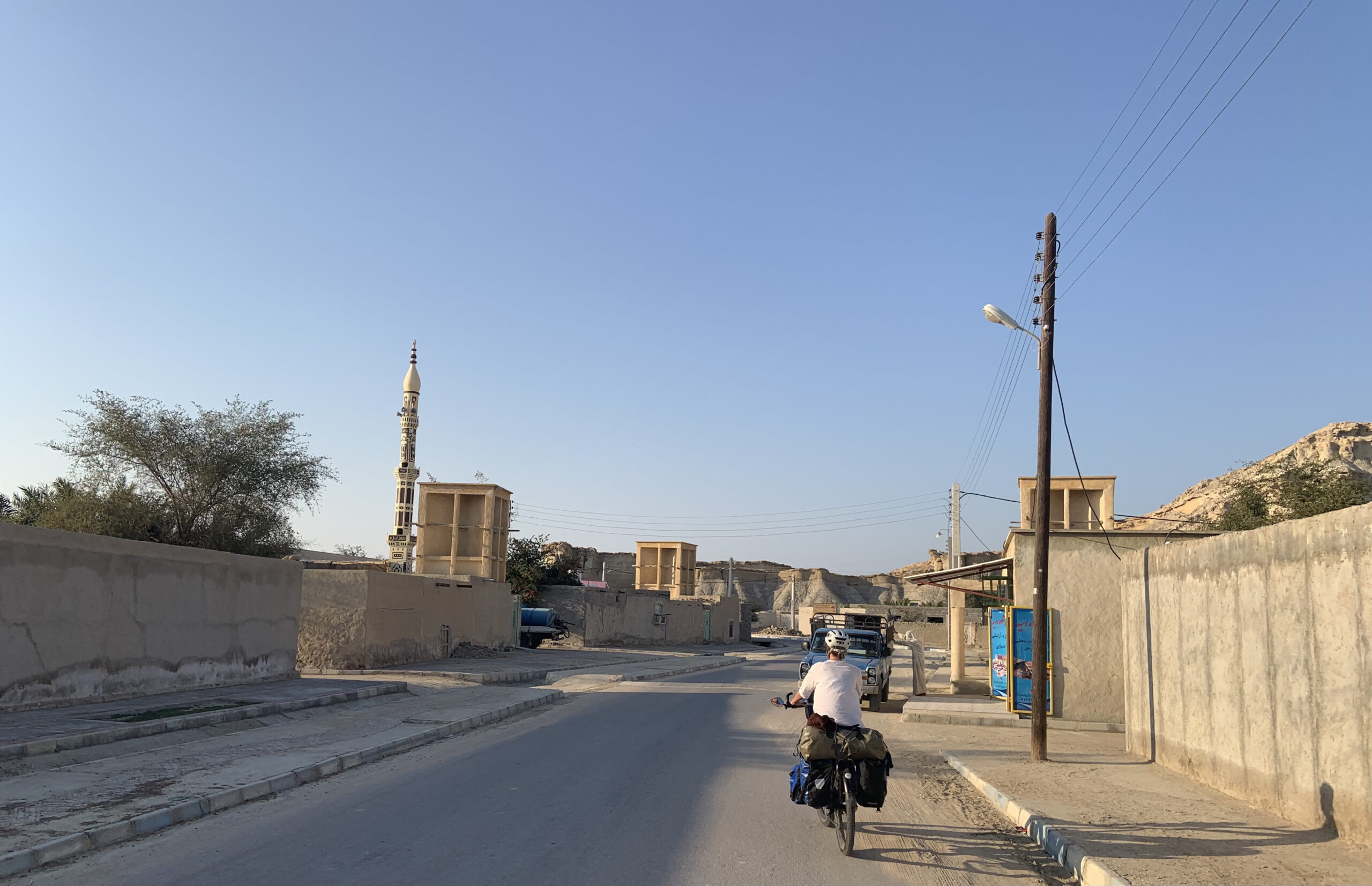
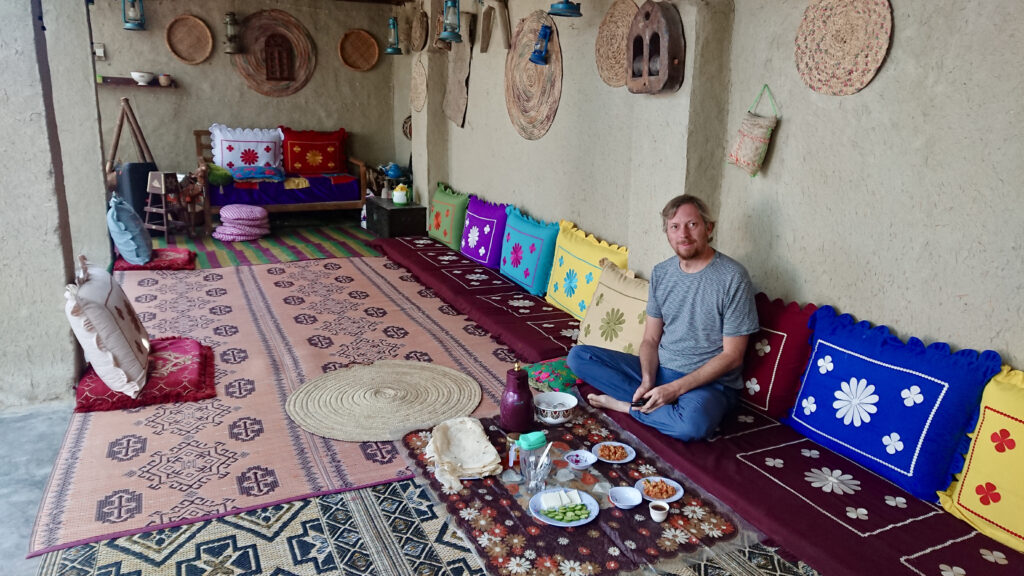

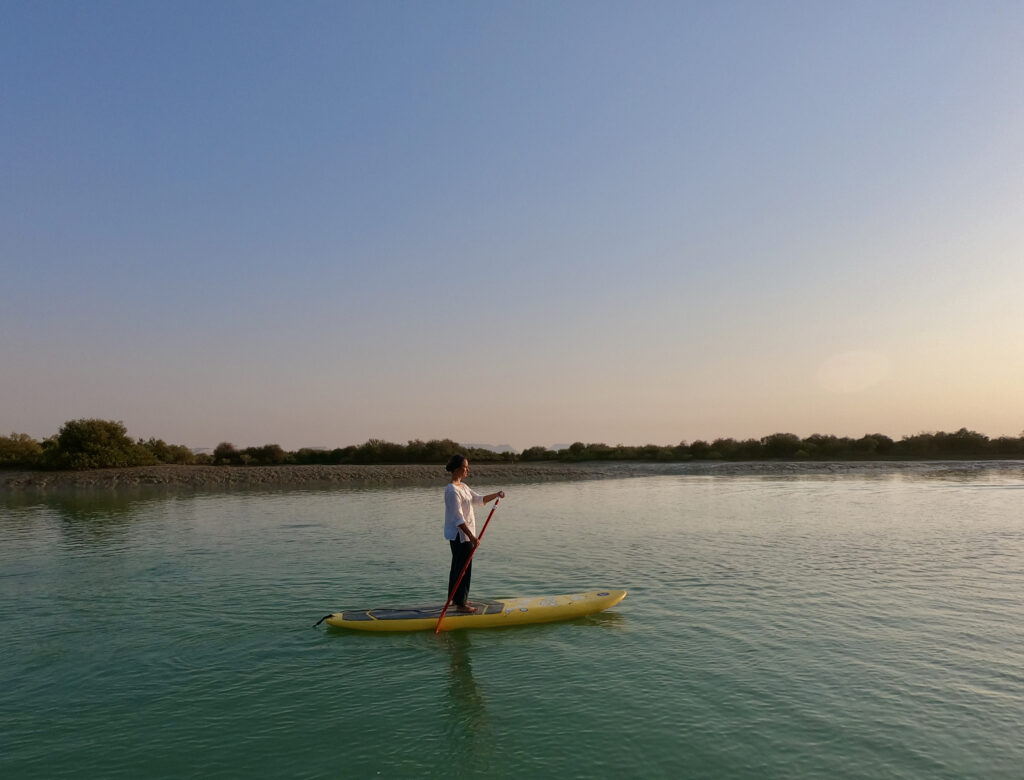
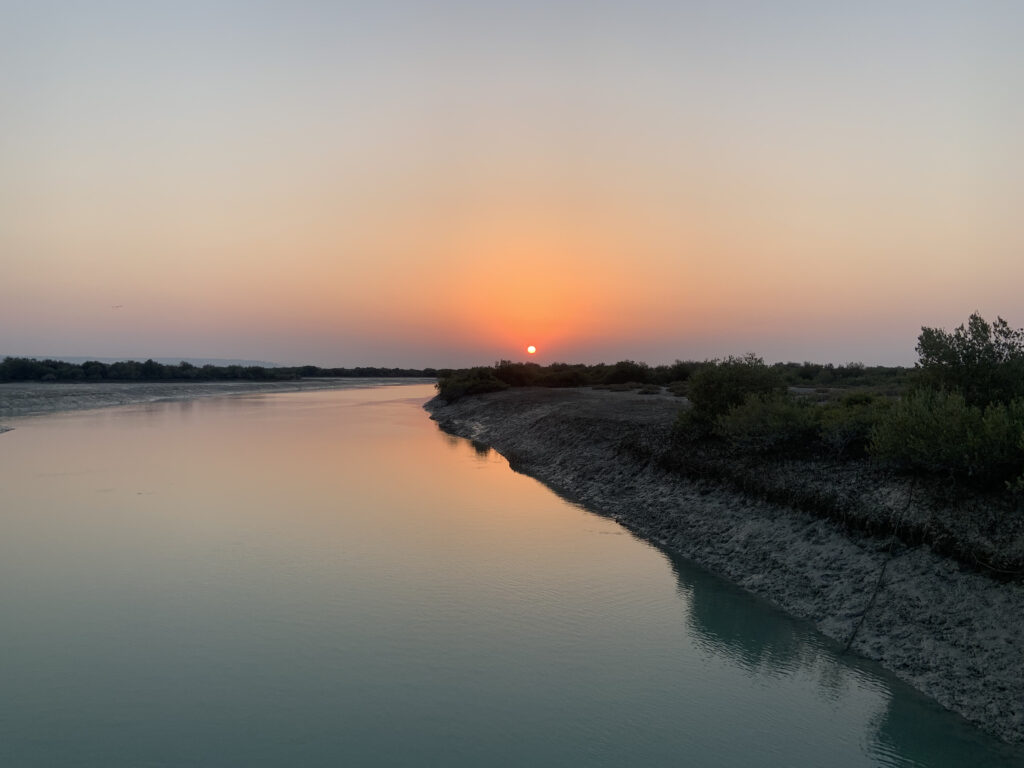
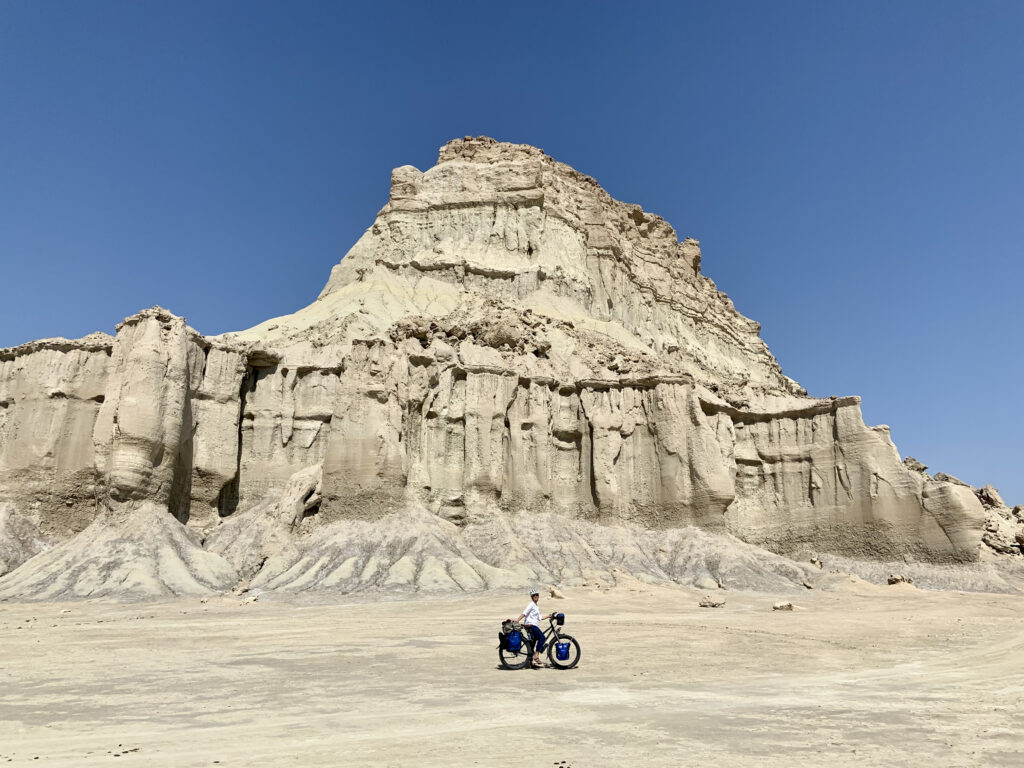



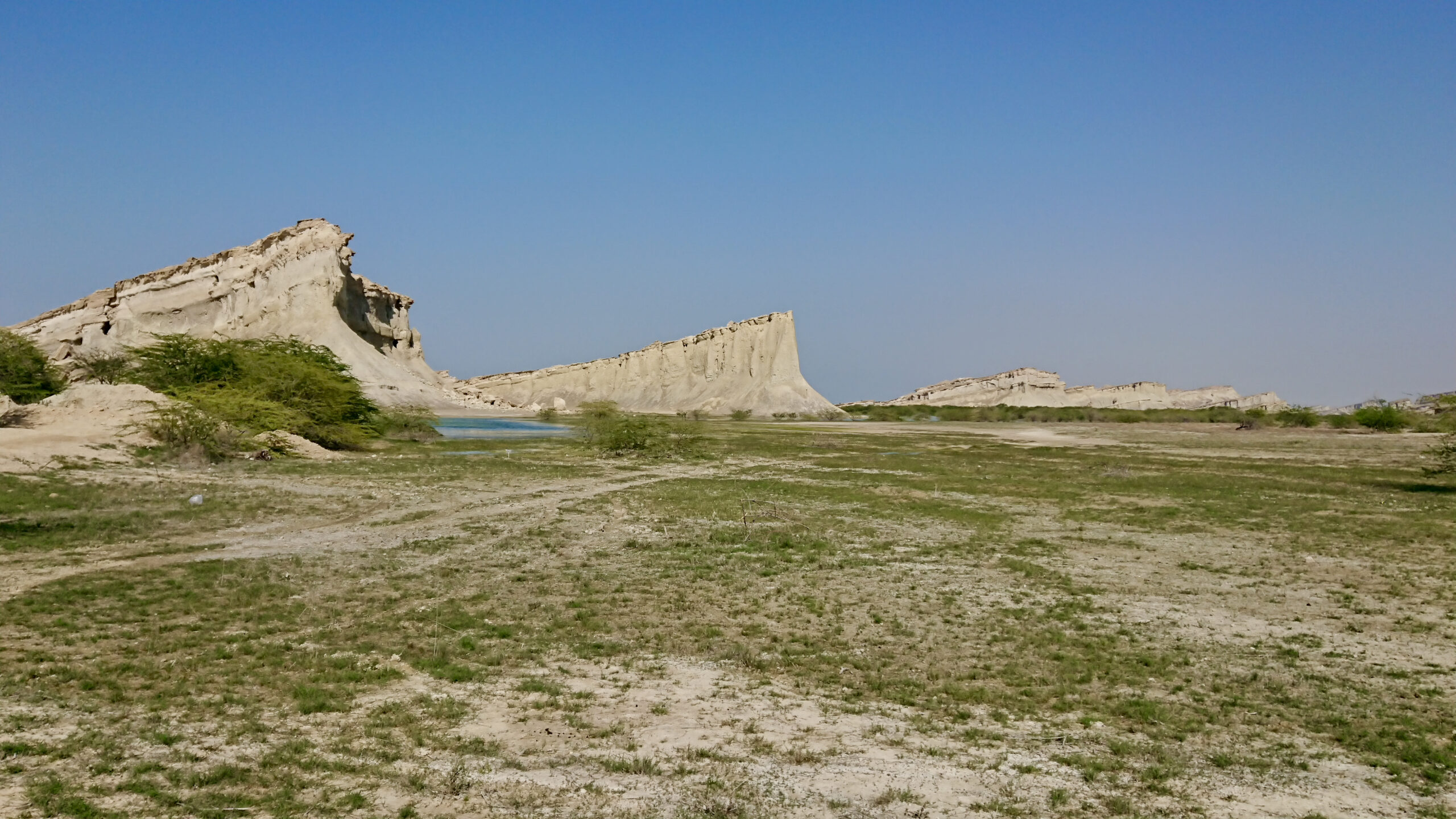
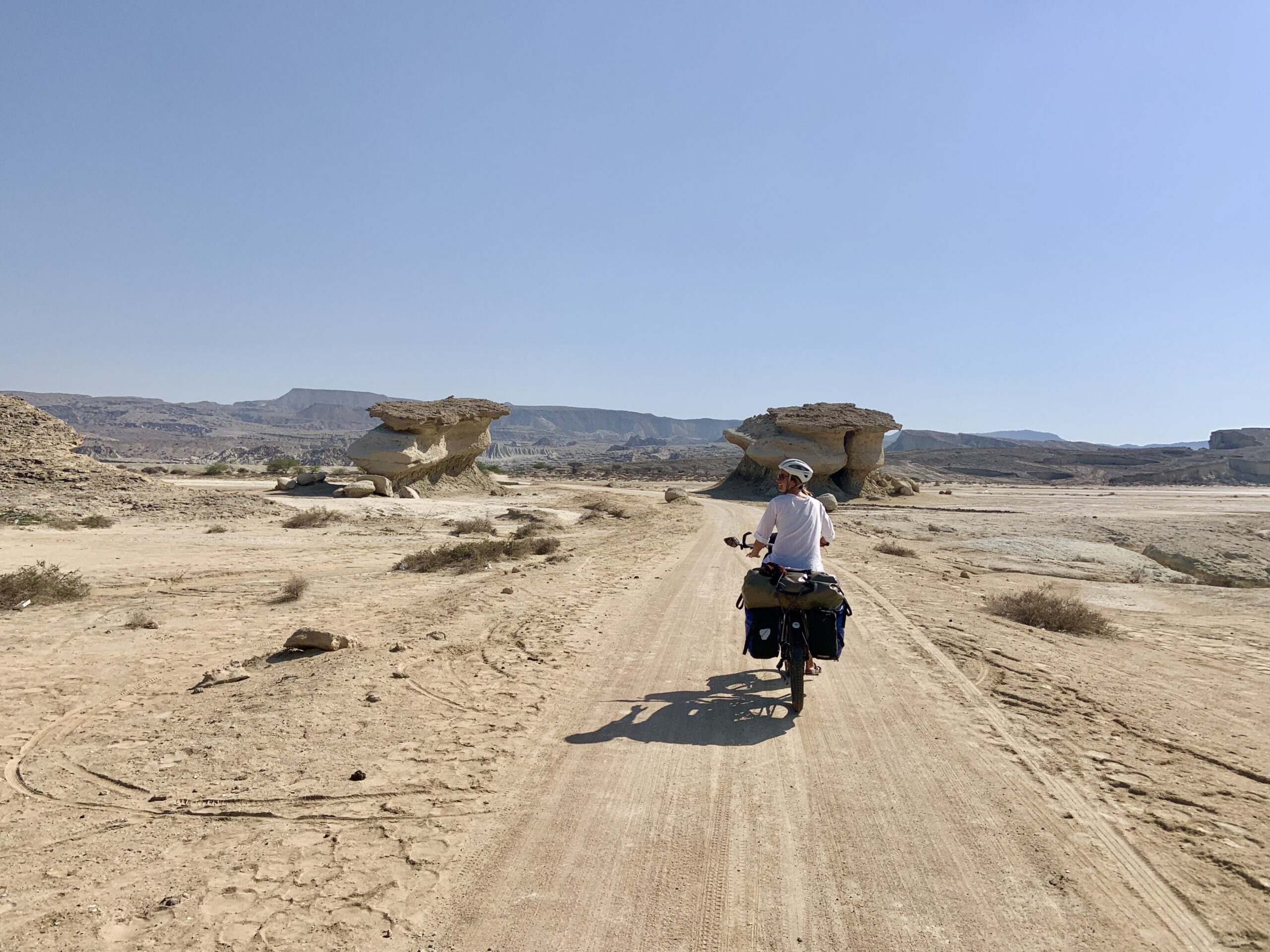
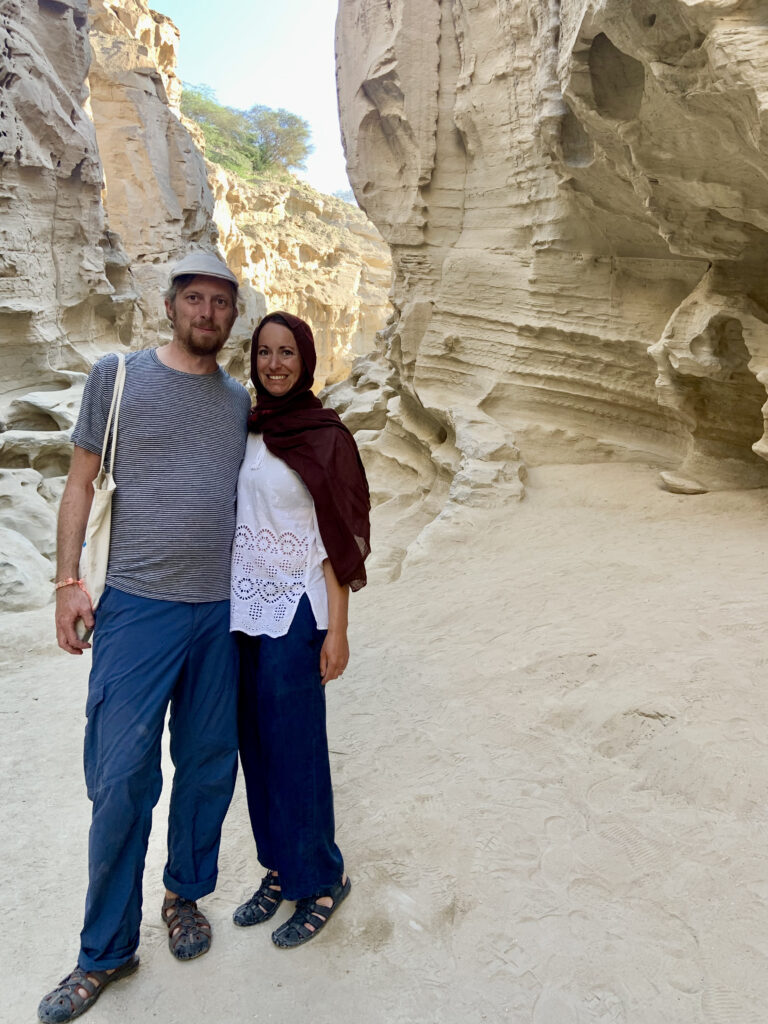

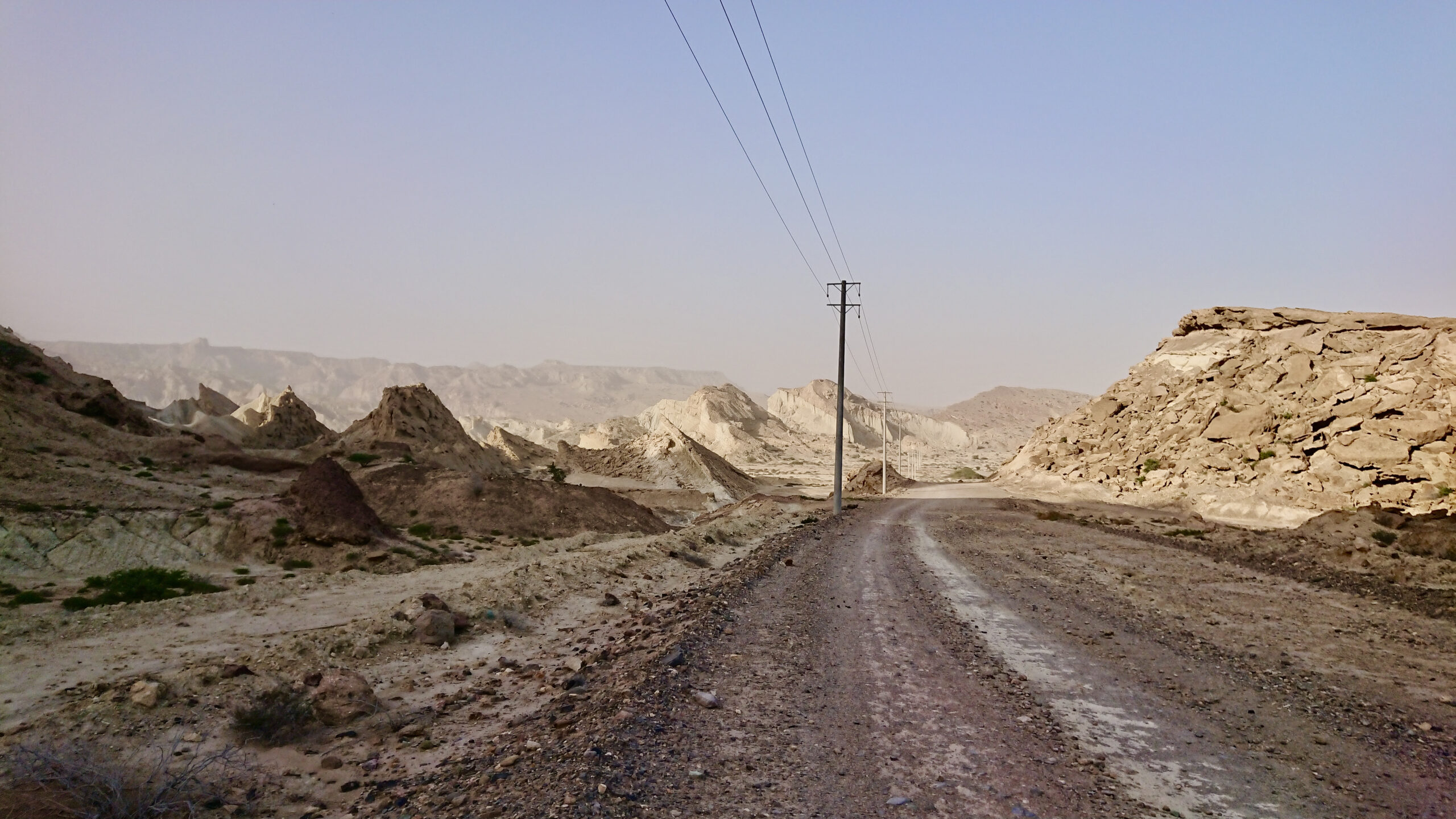
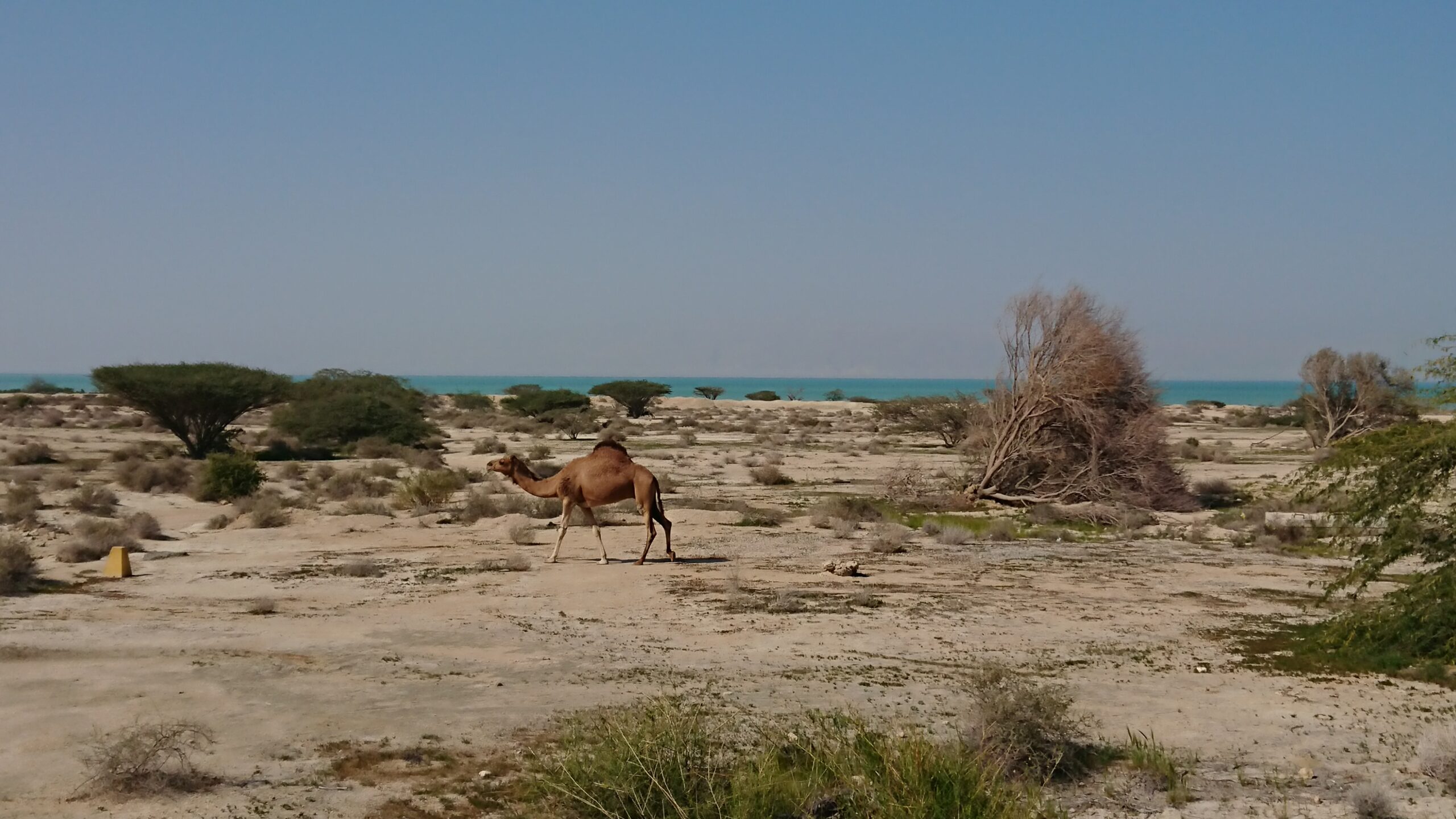

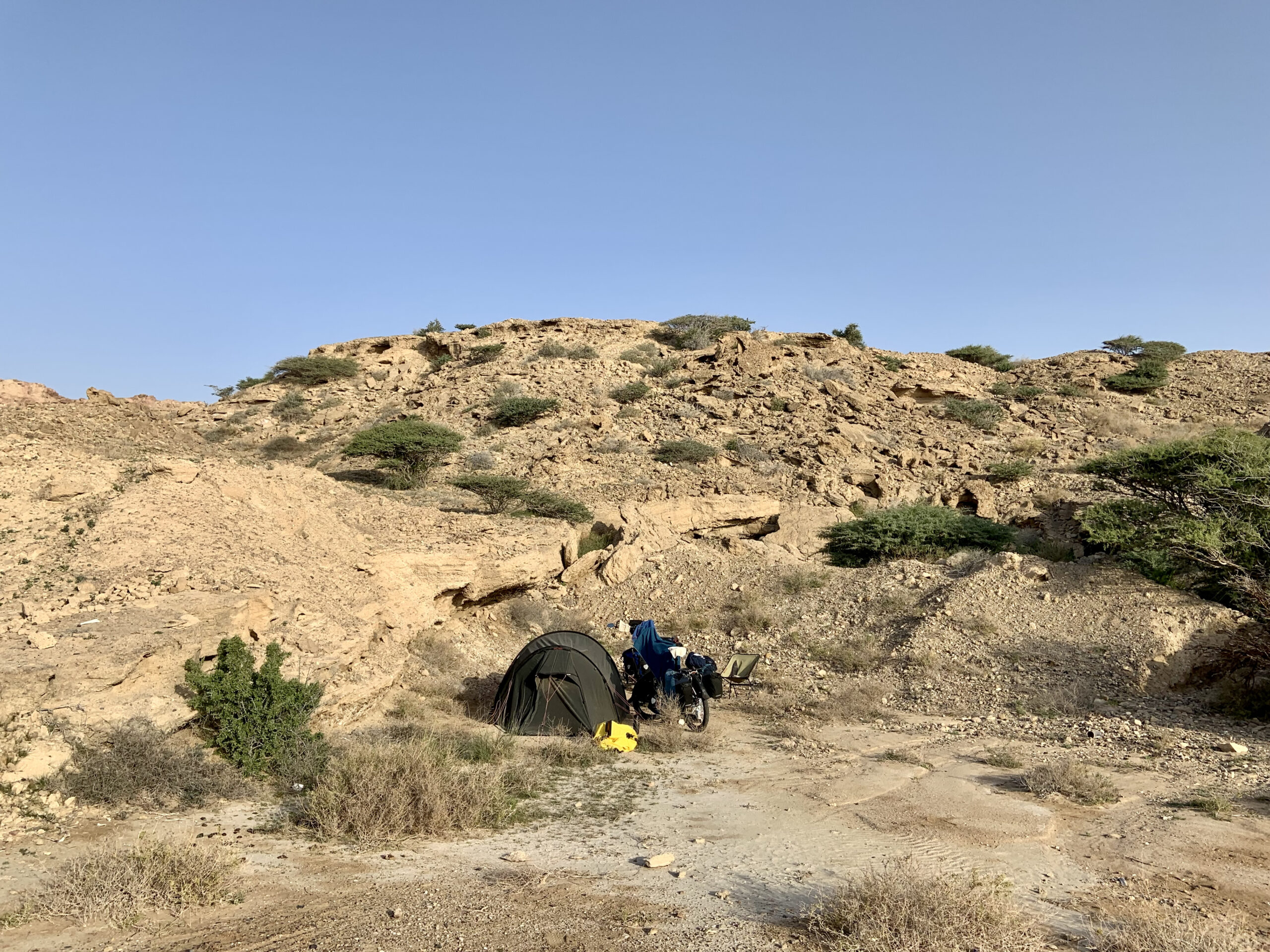
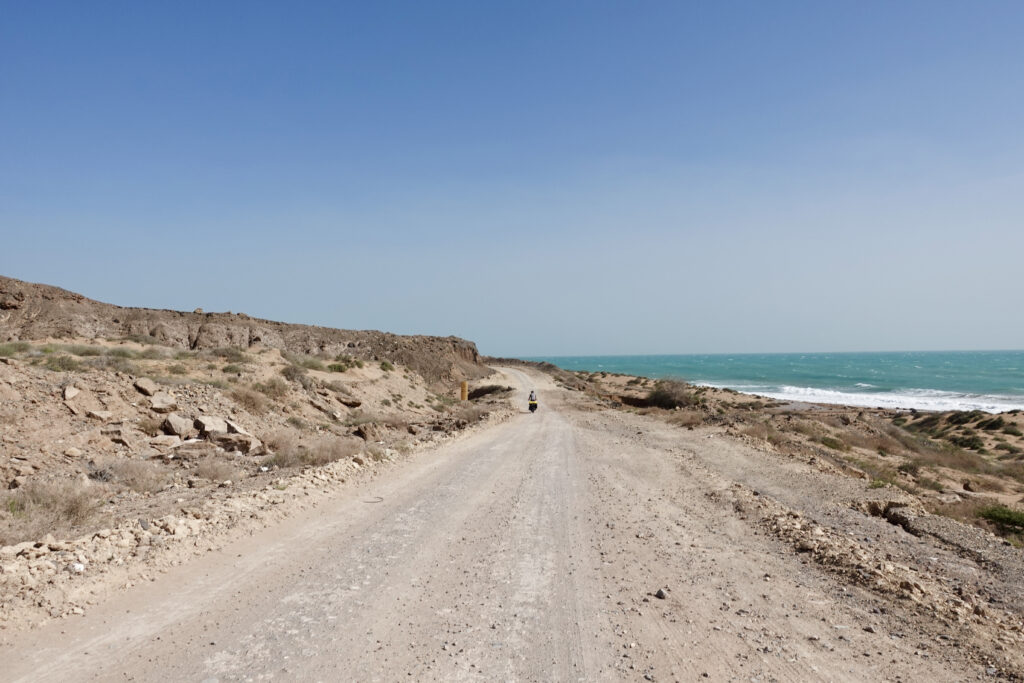
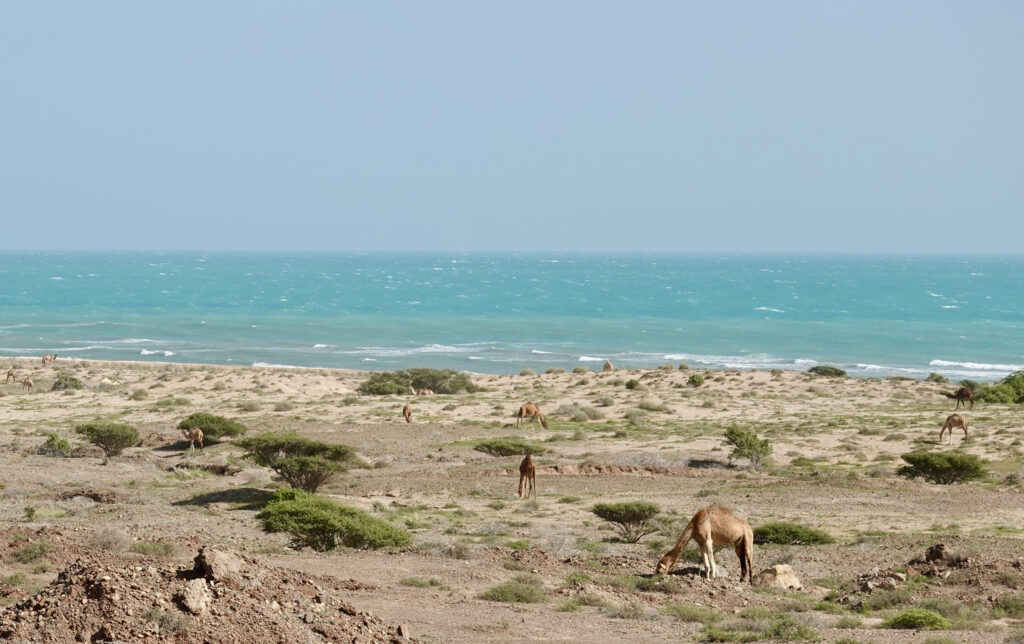

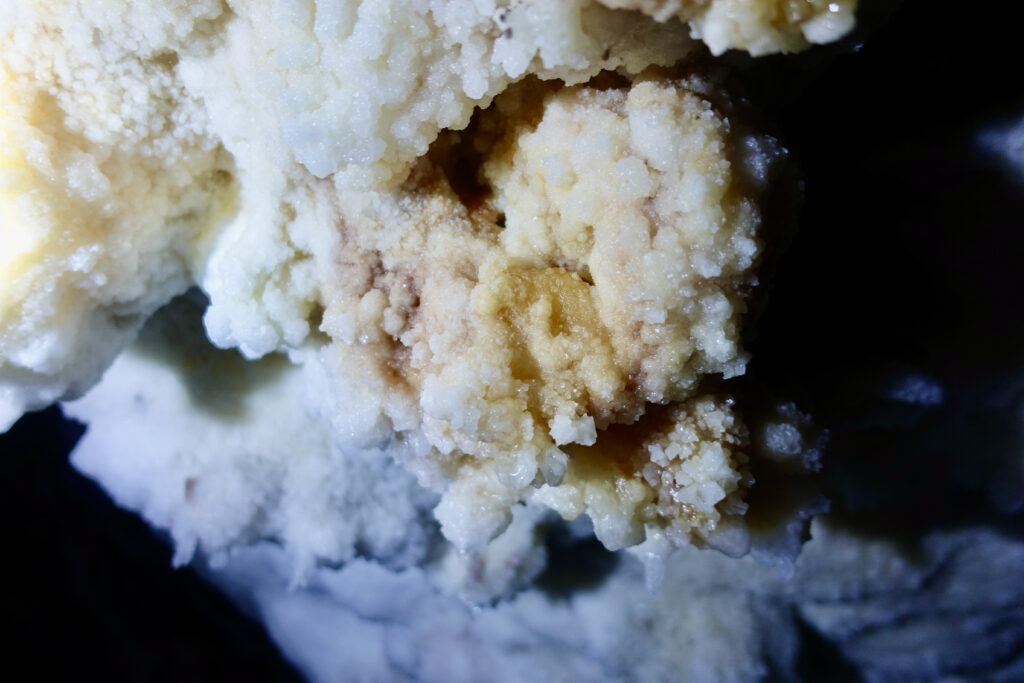
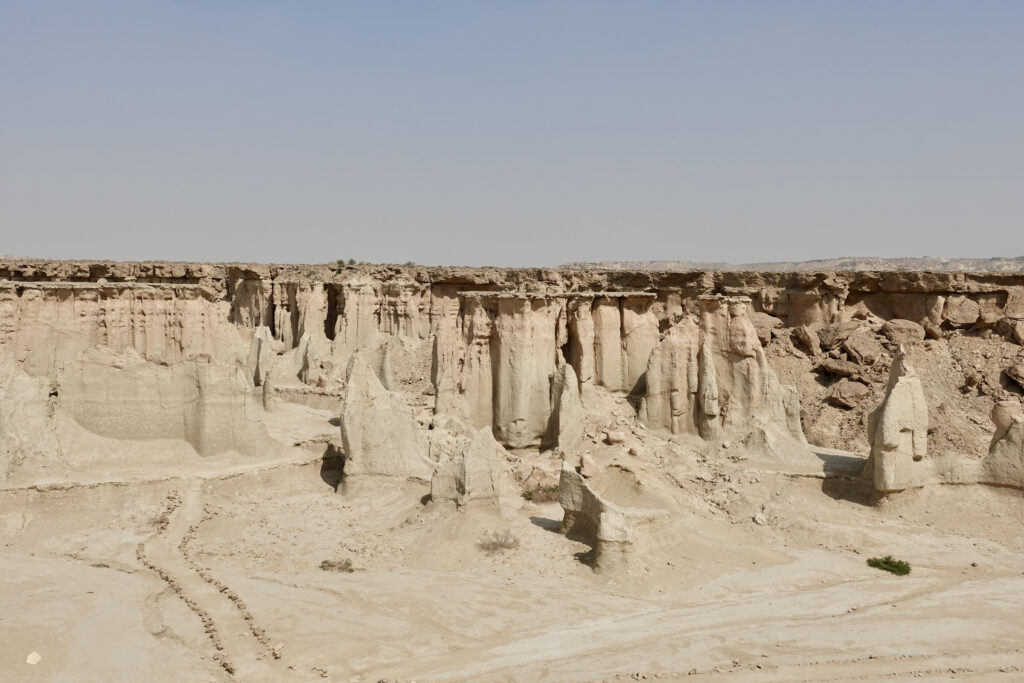

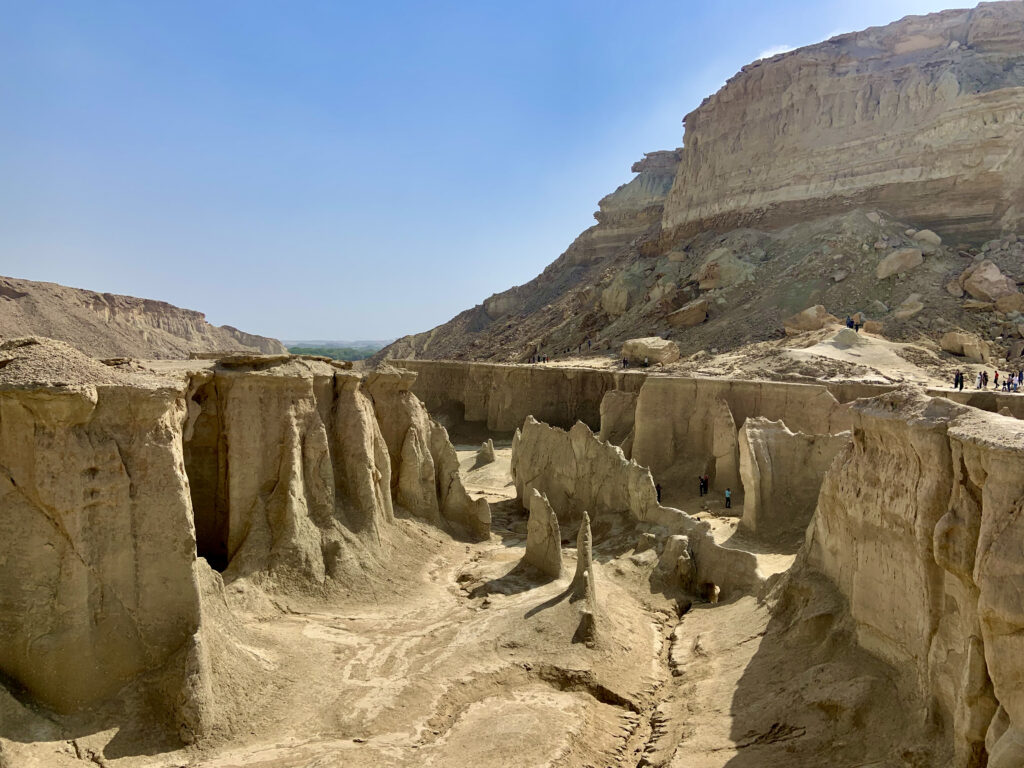




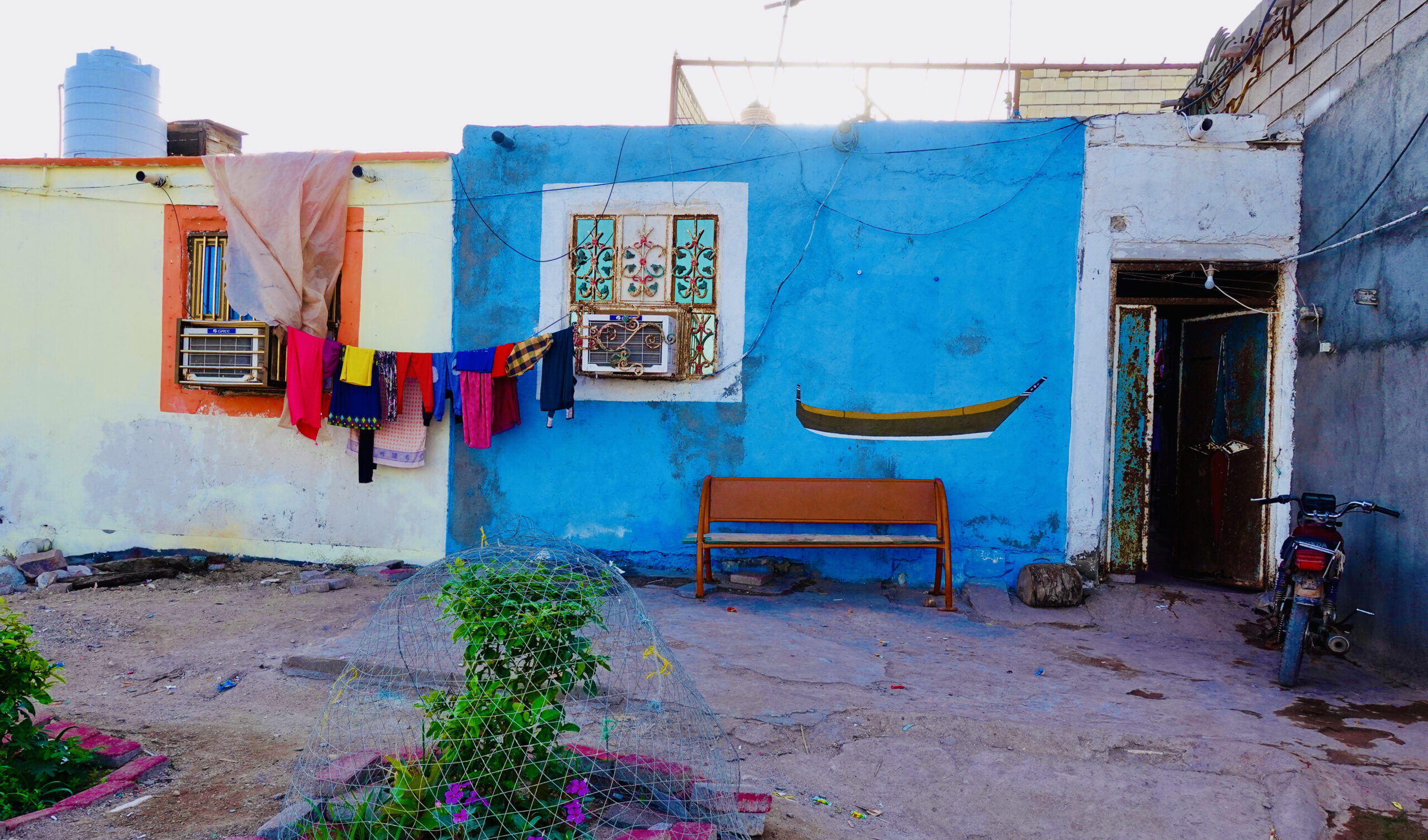
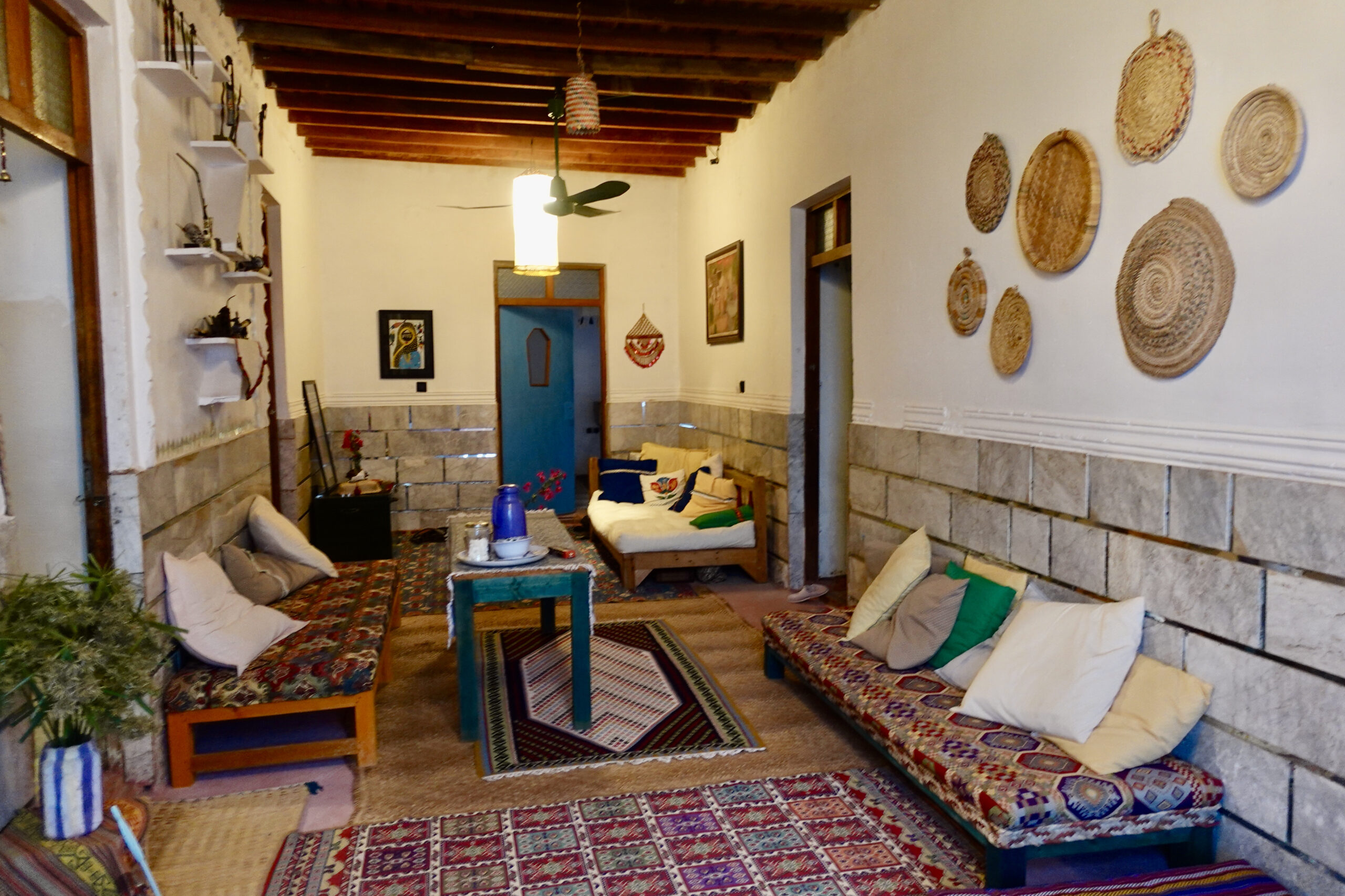
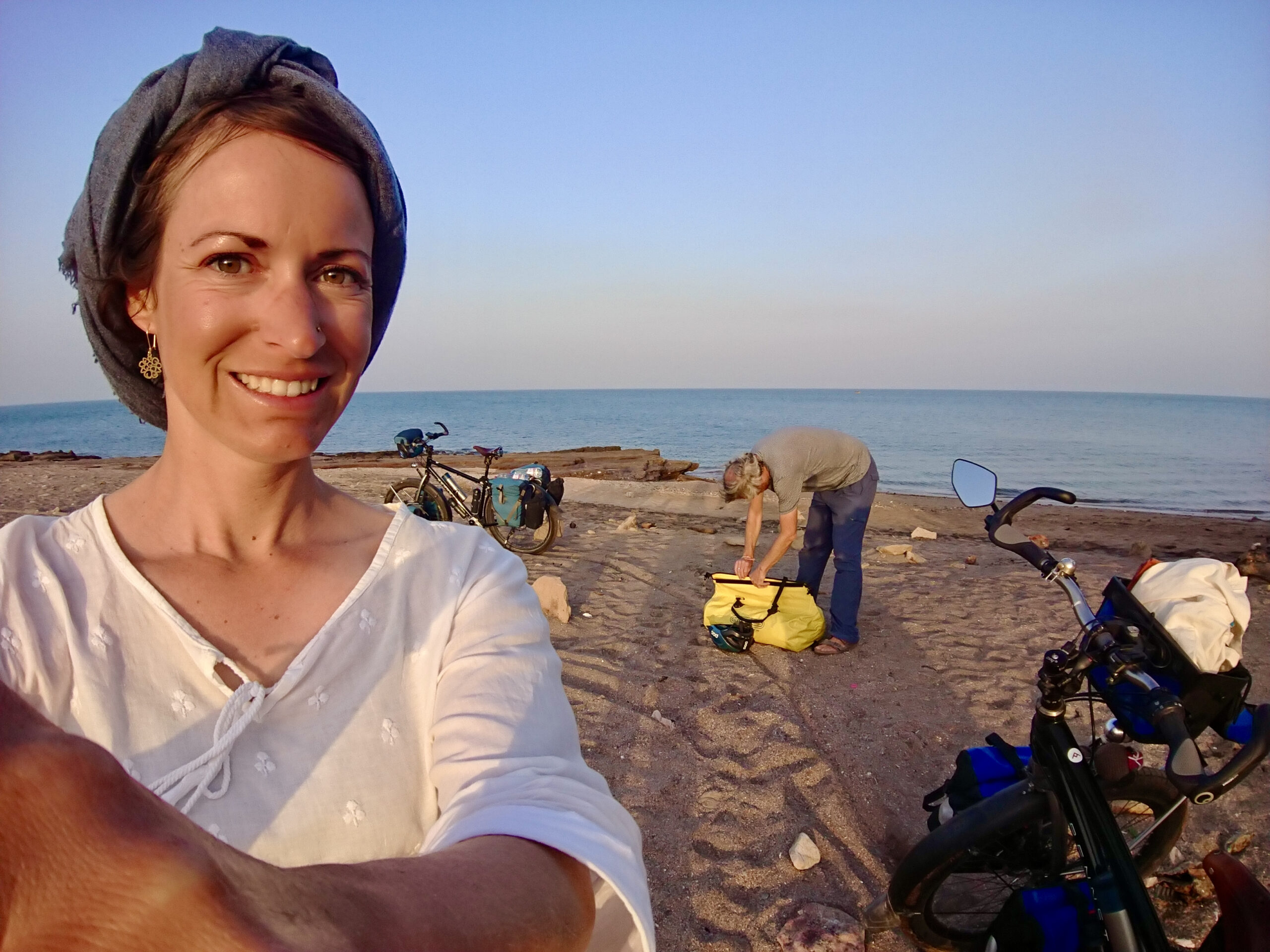

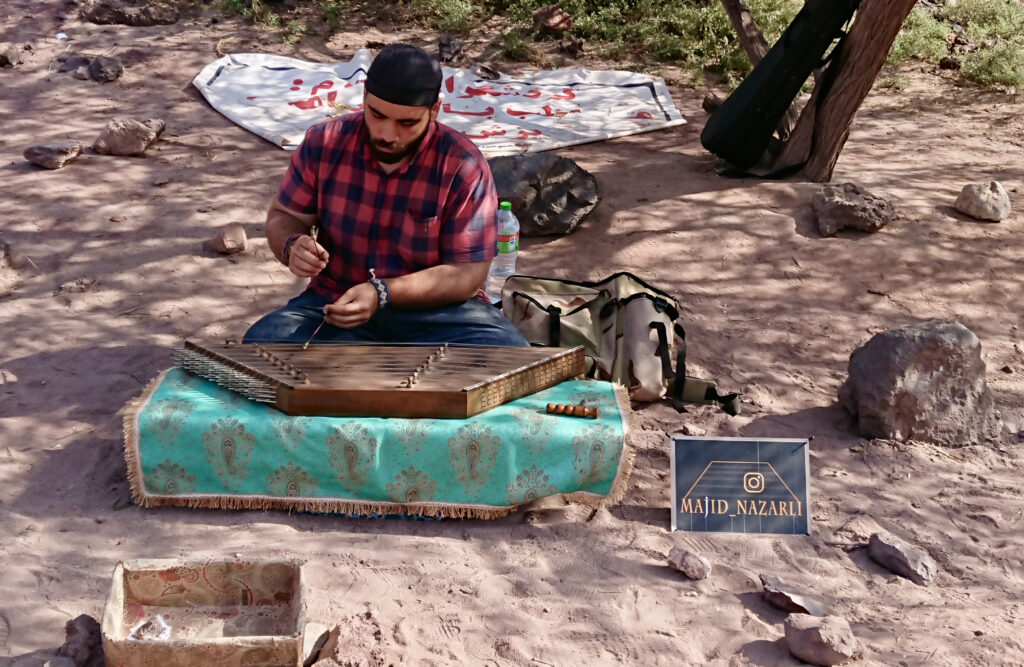



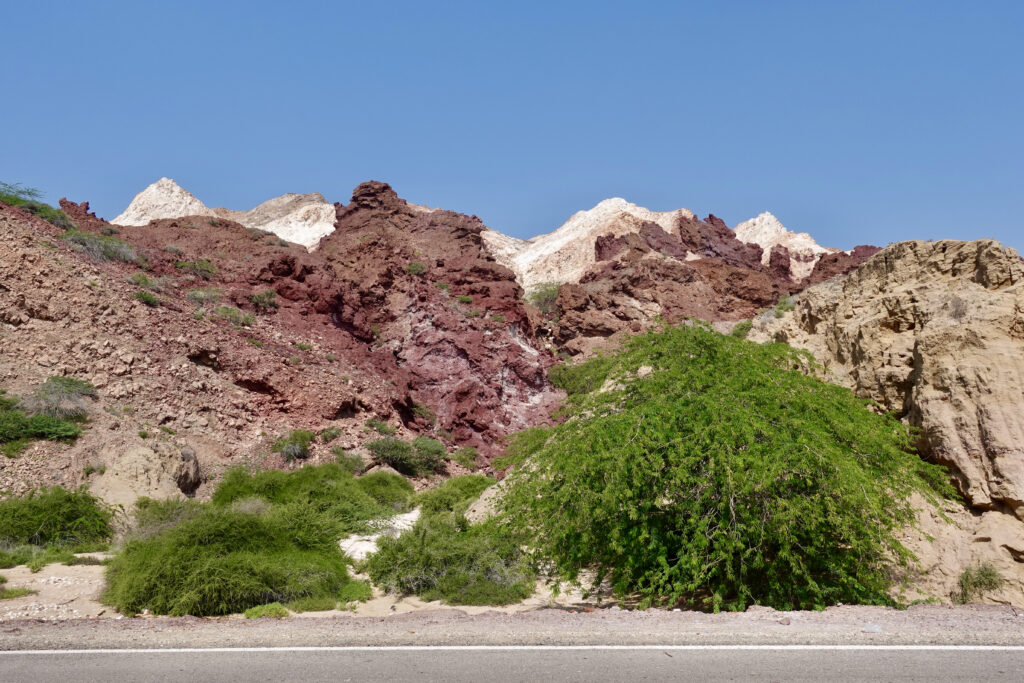

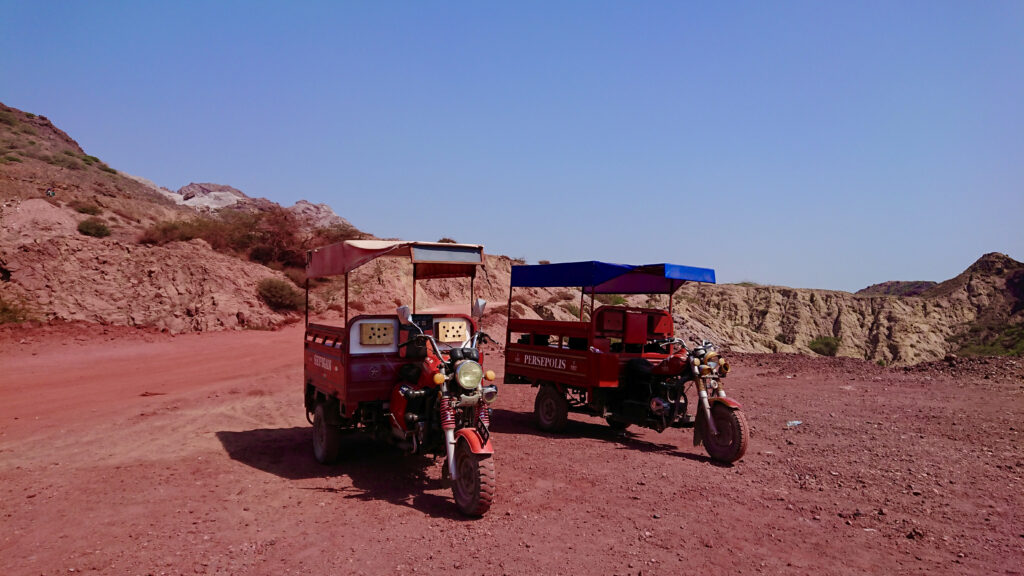

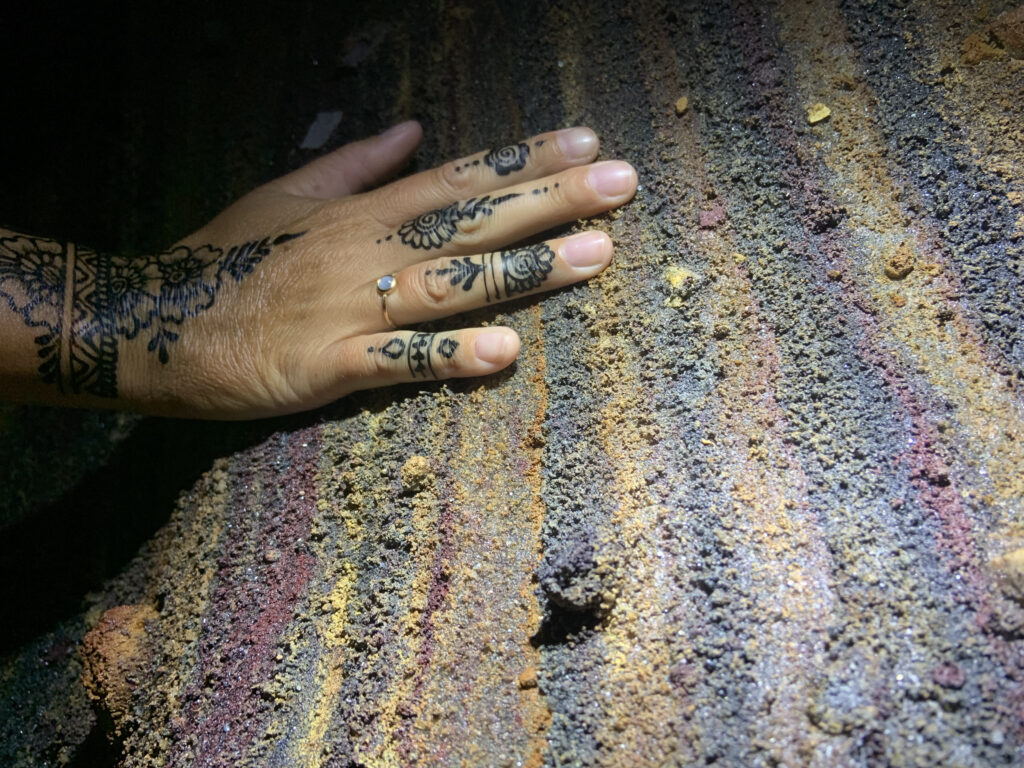
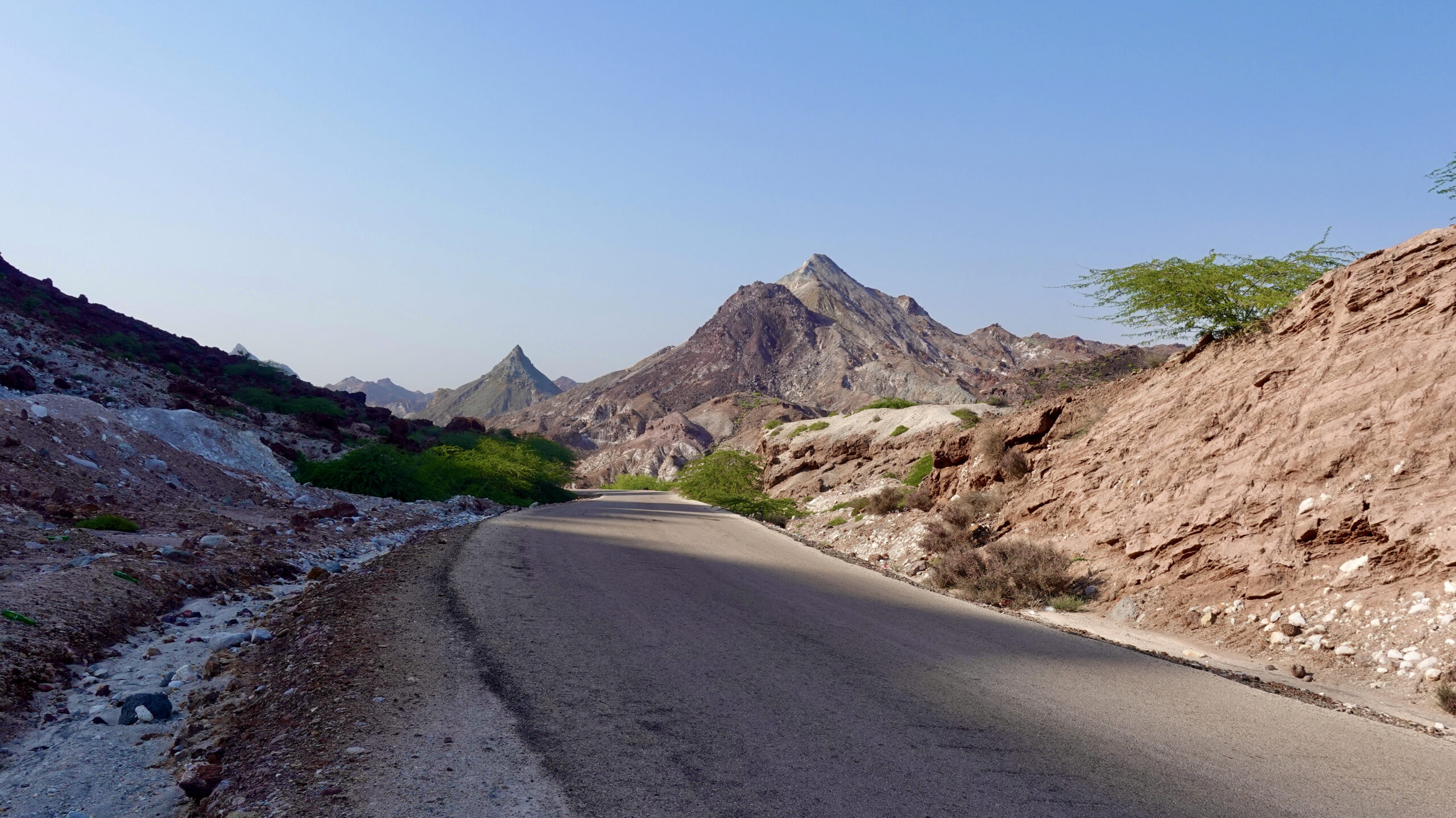


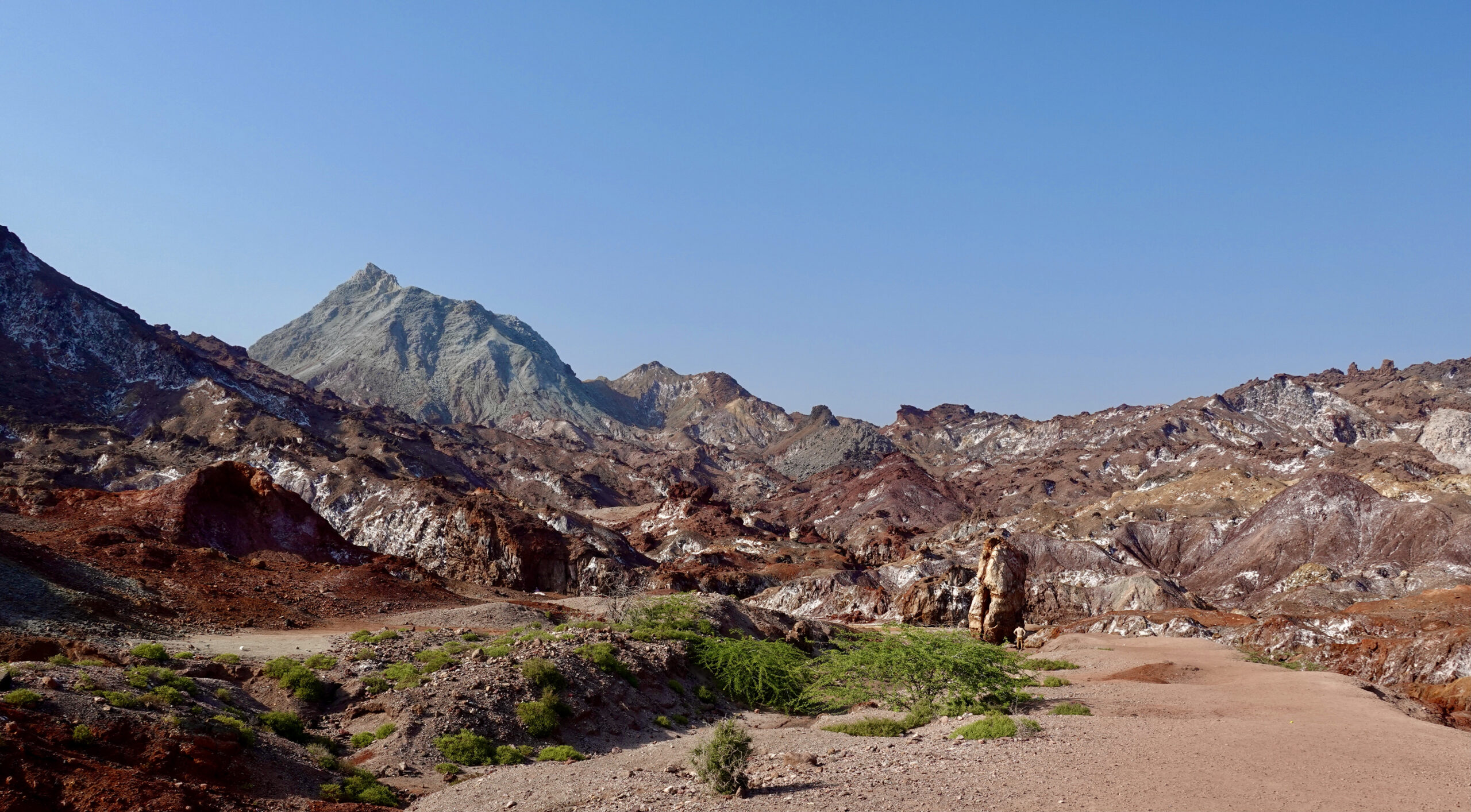
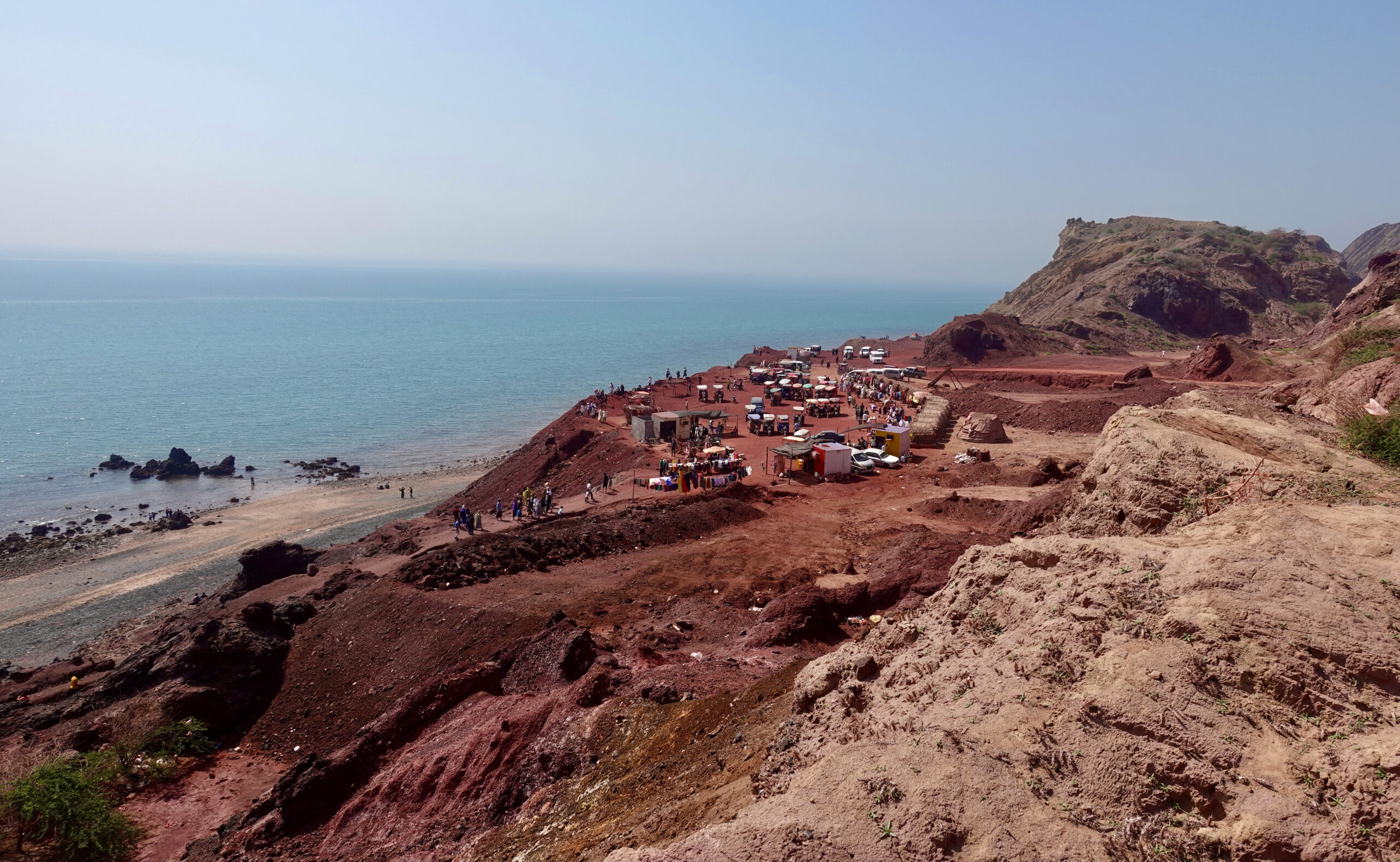
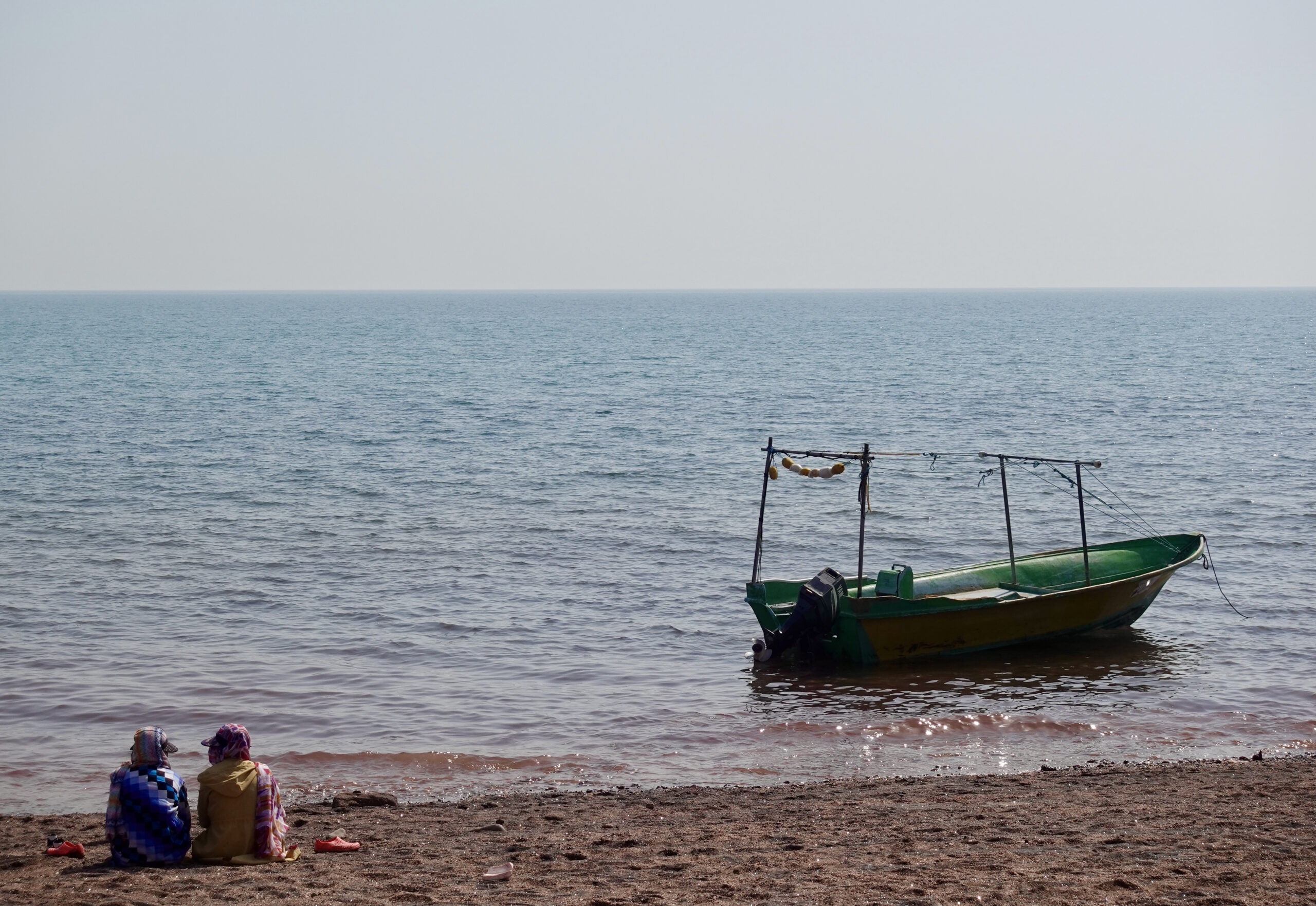
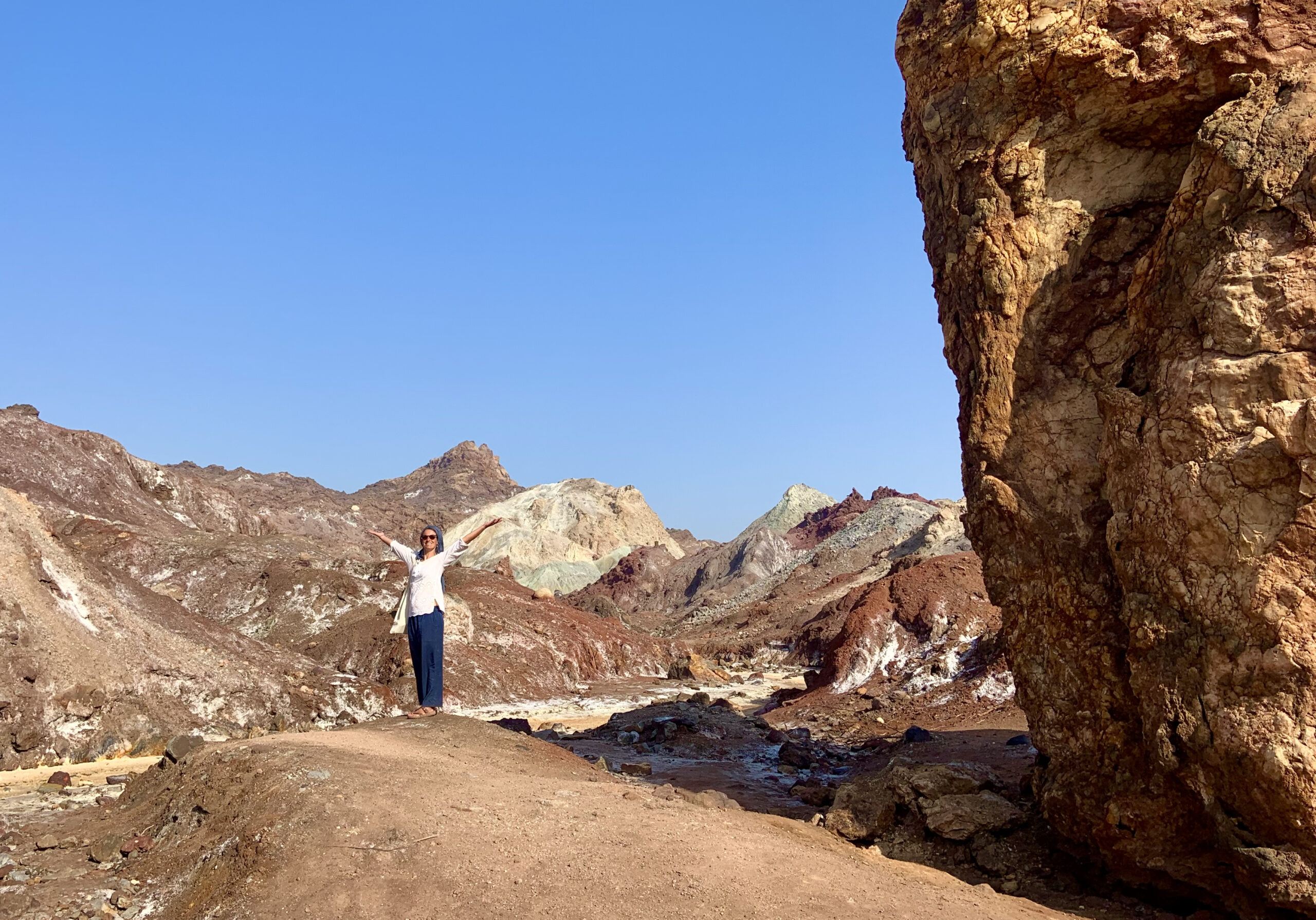
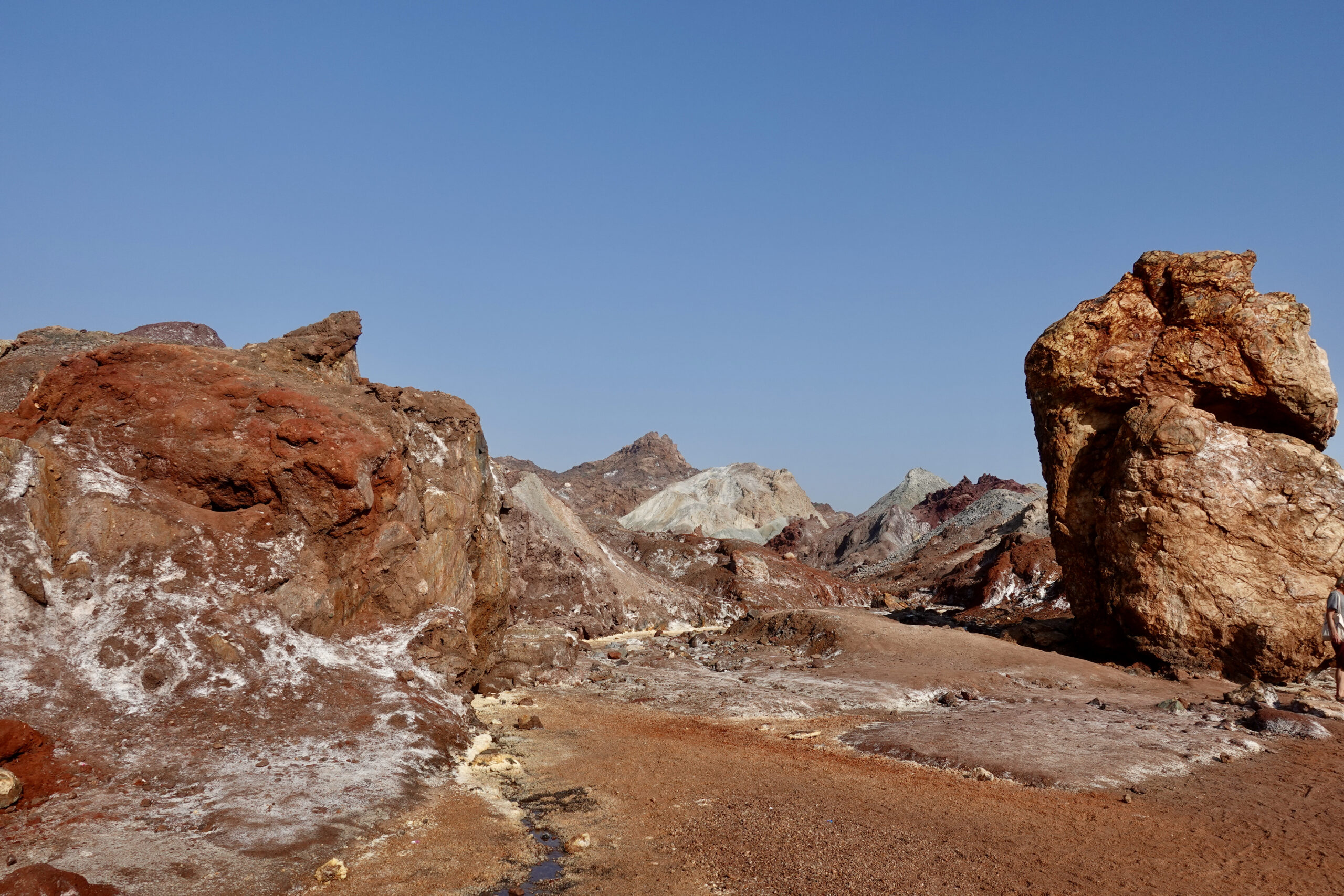


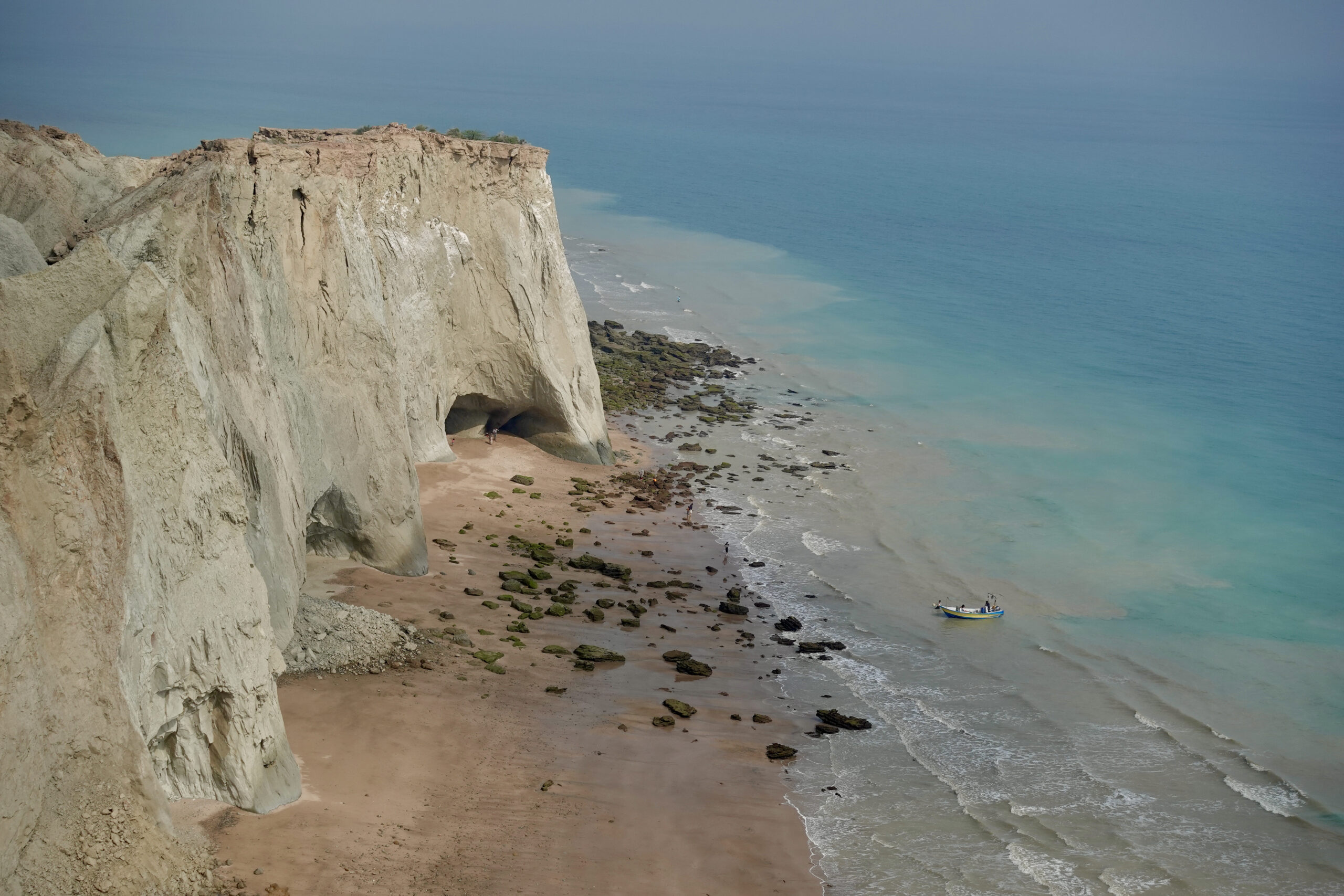
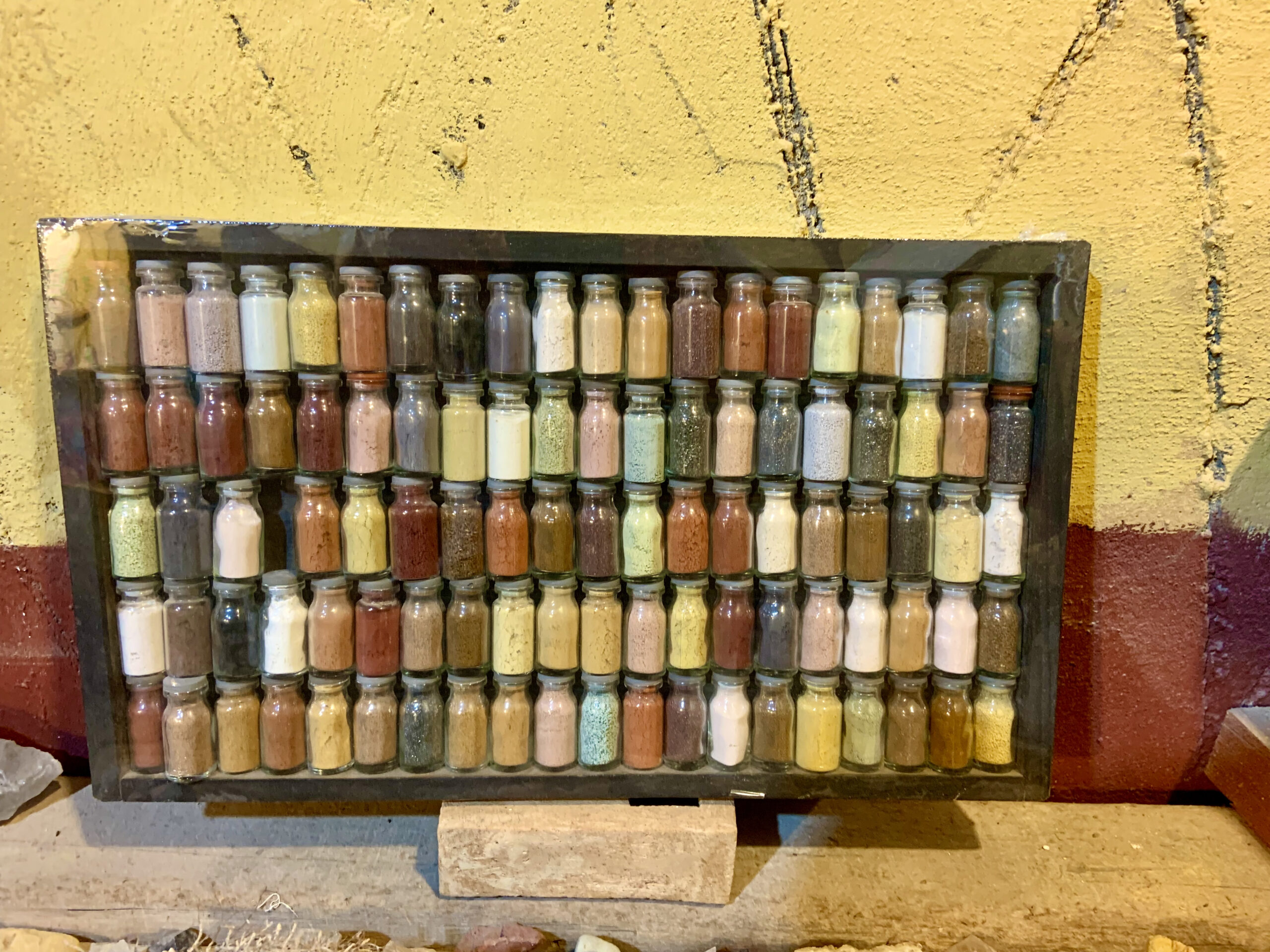
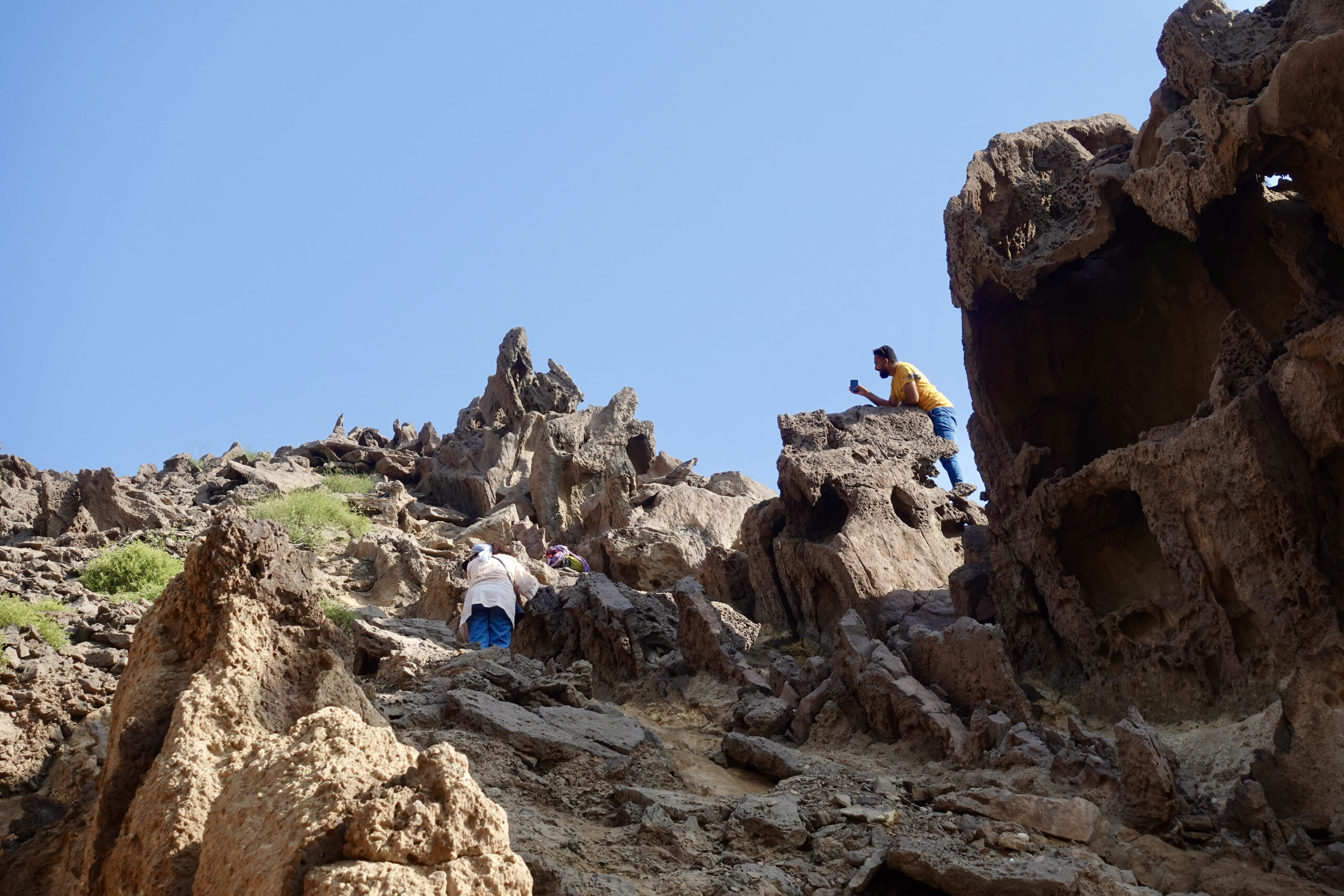
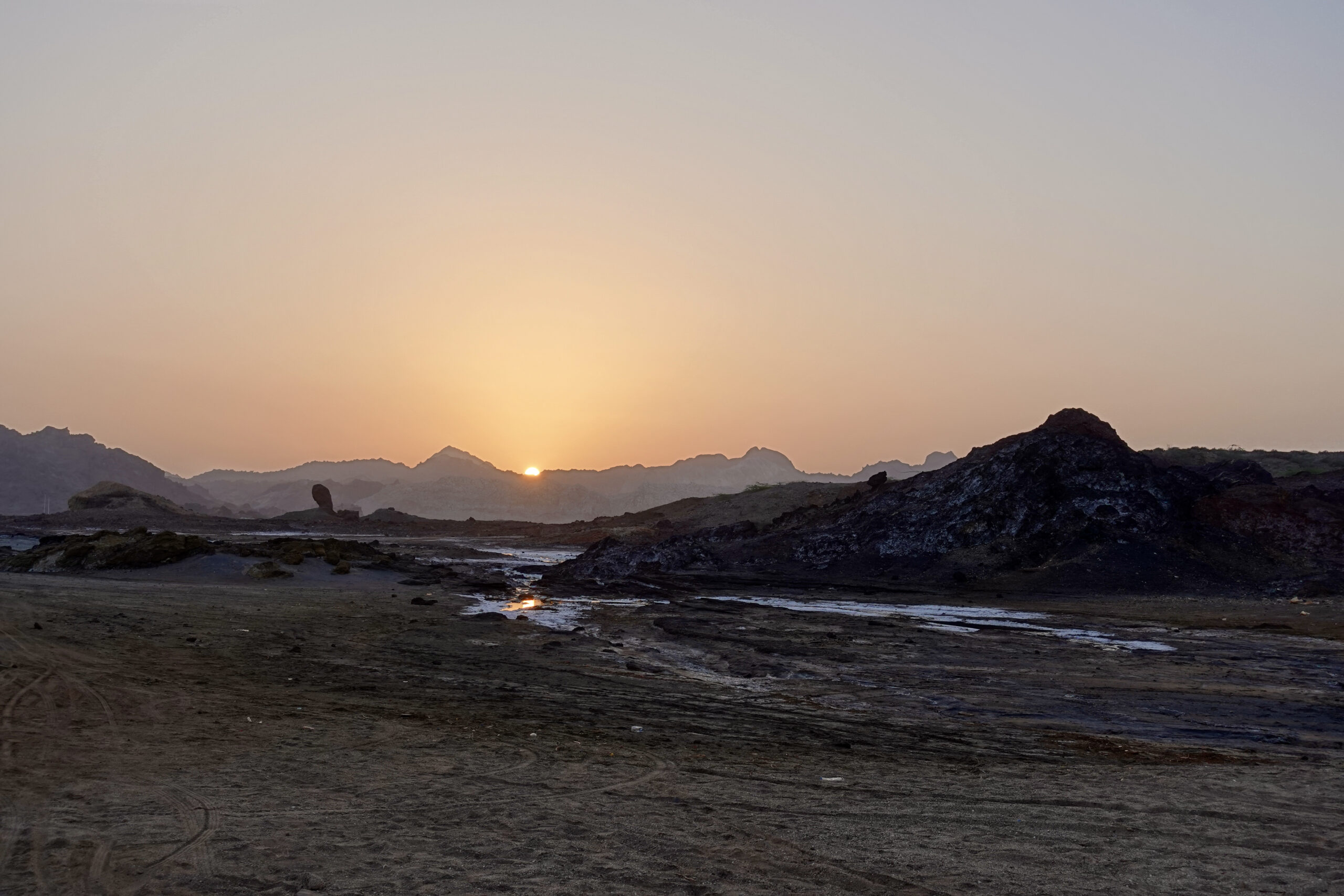

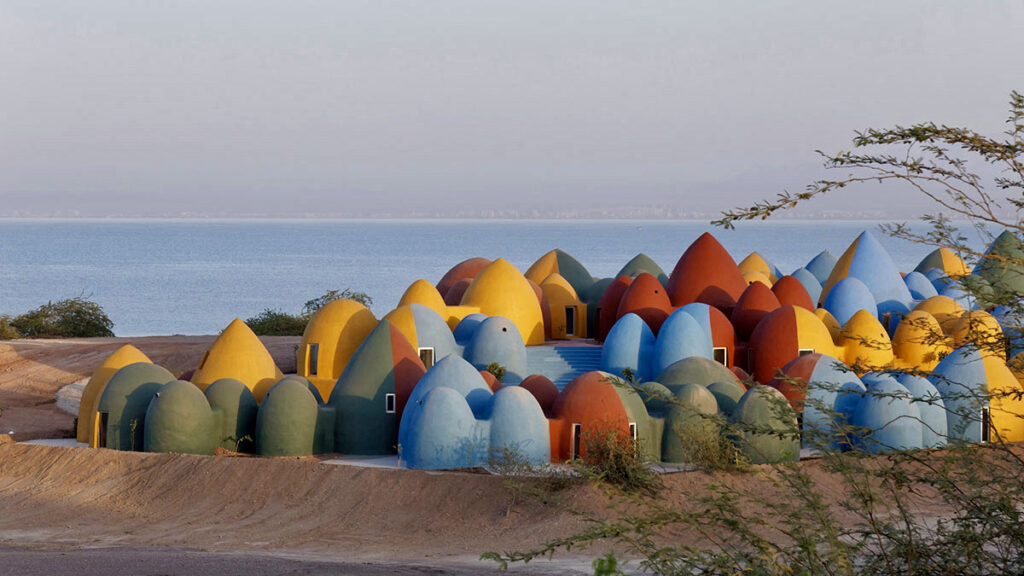
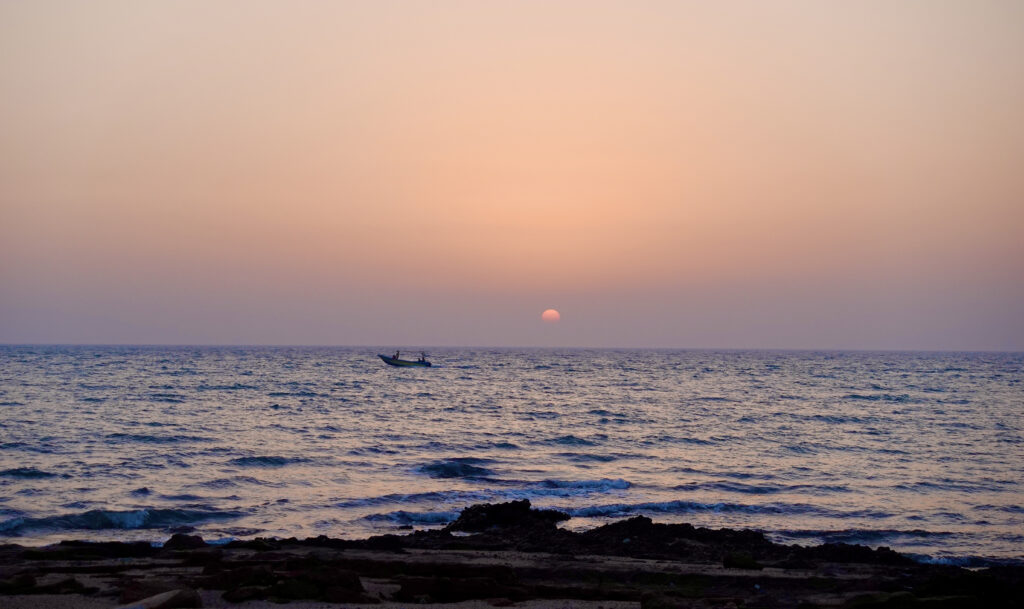
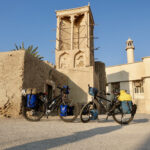
Leave a Reply